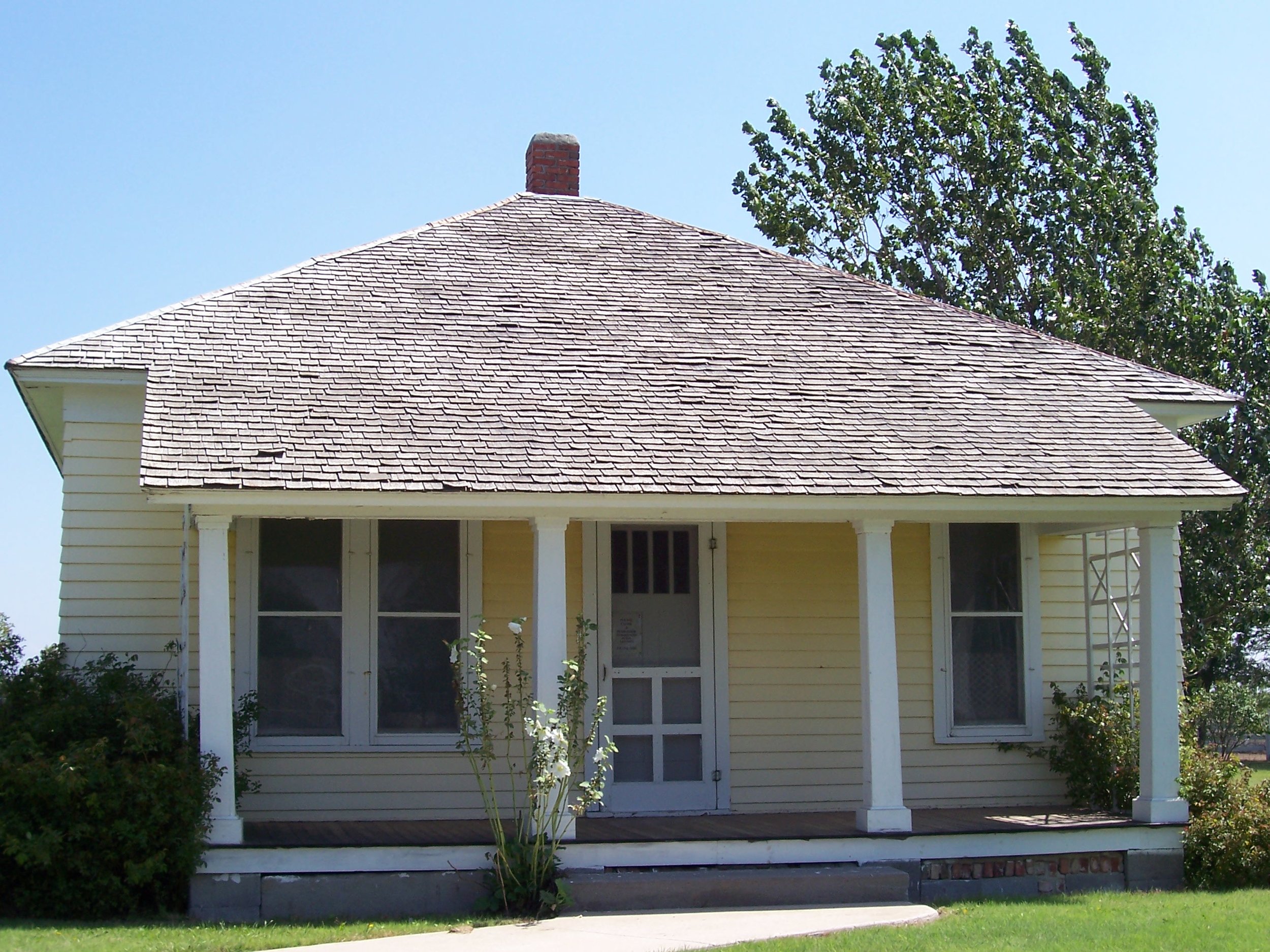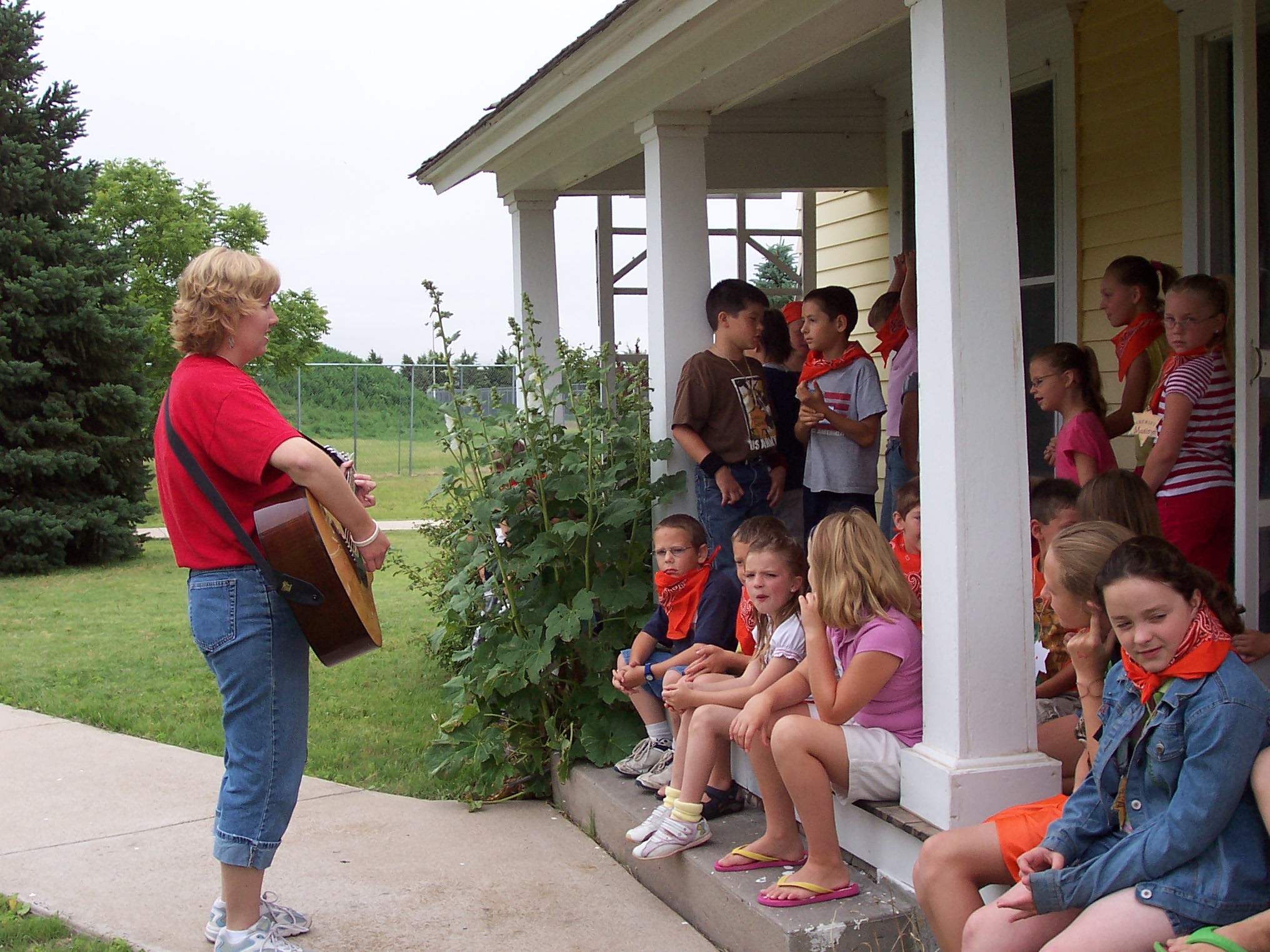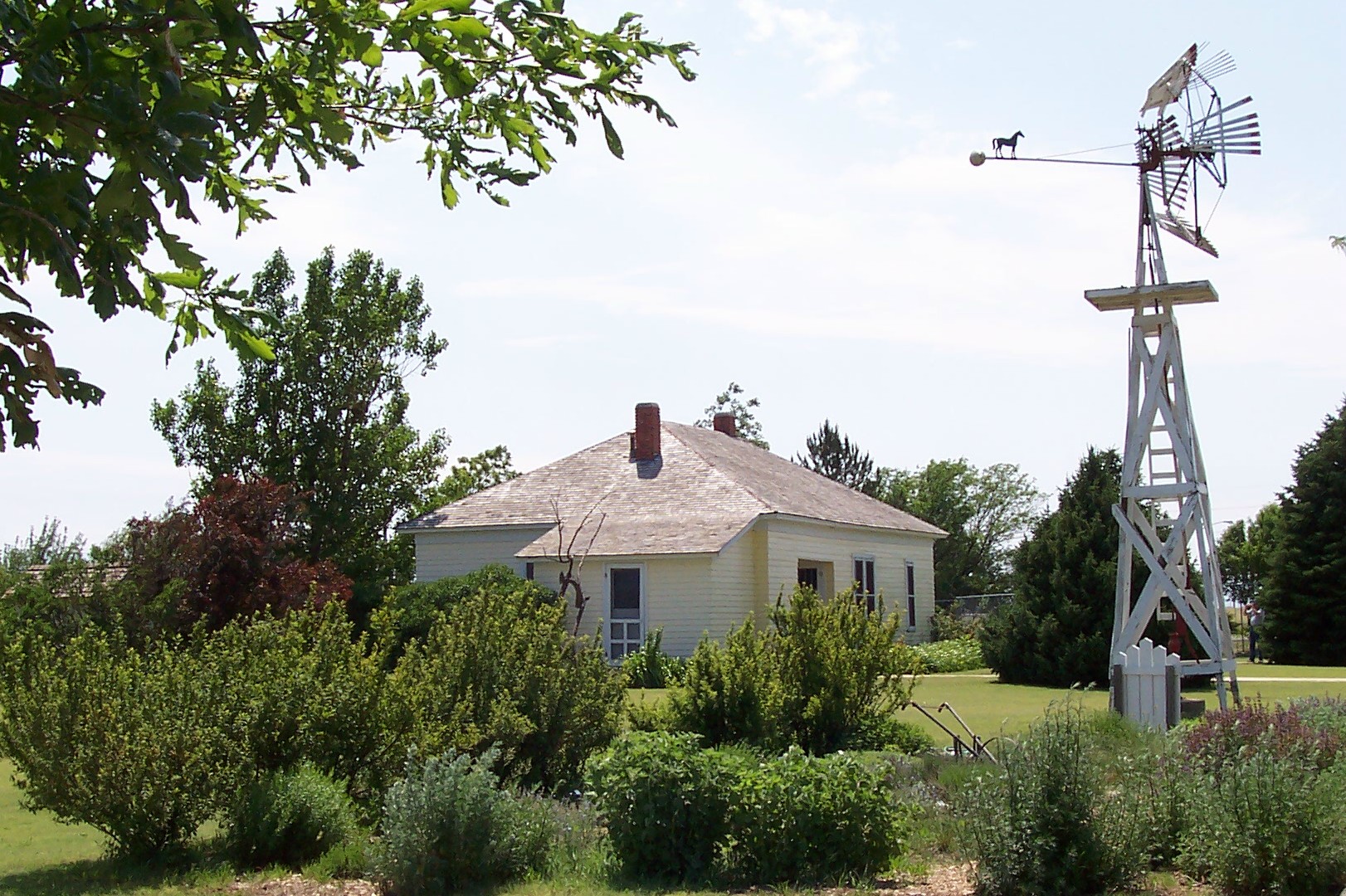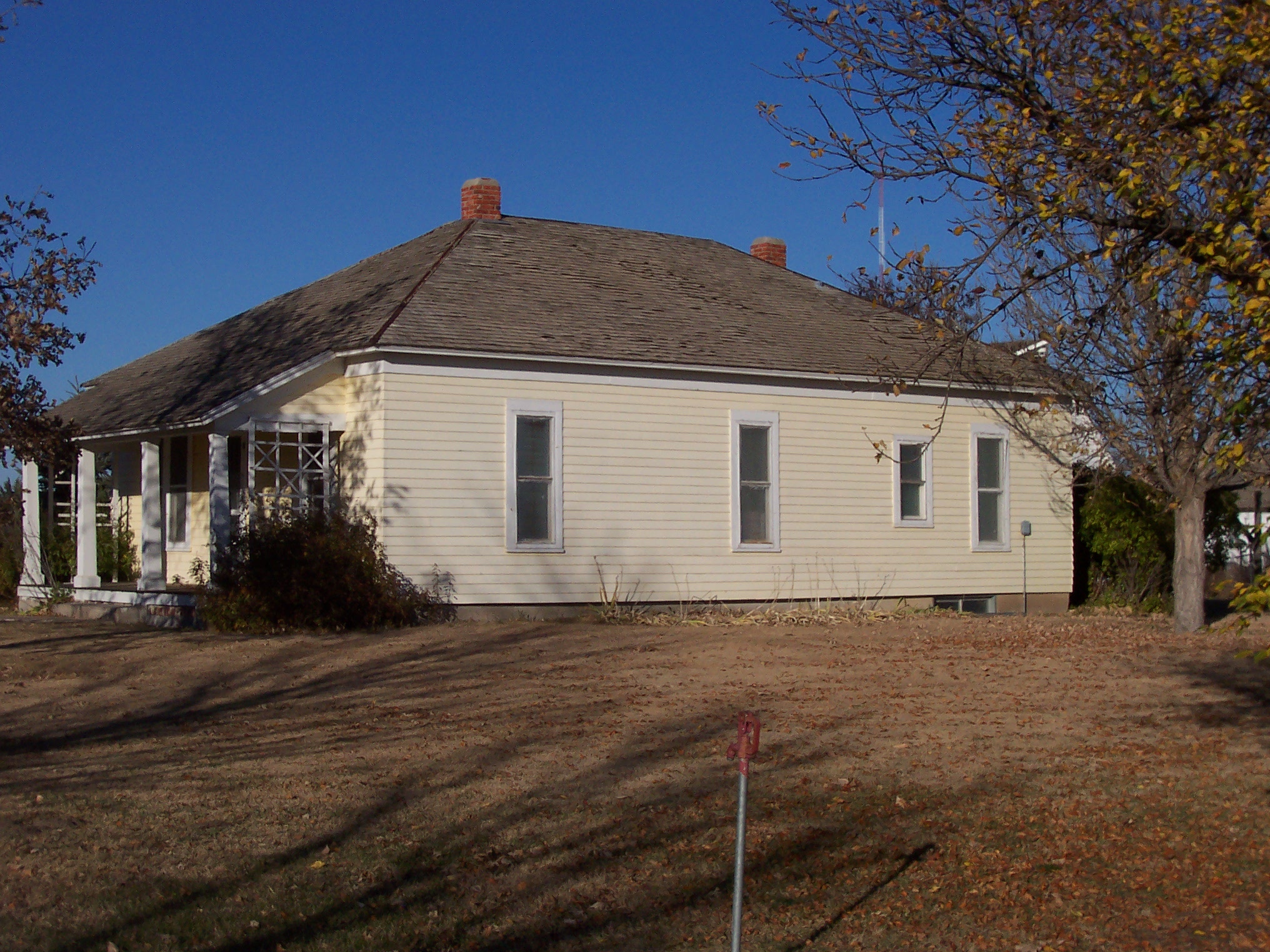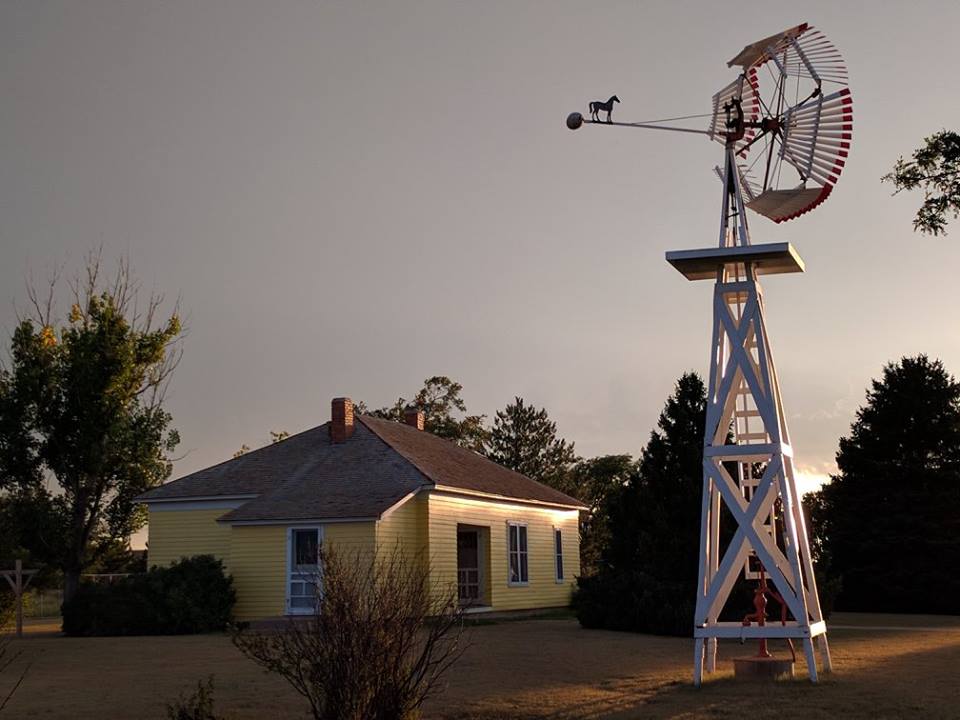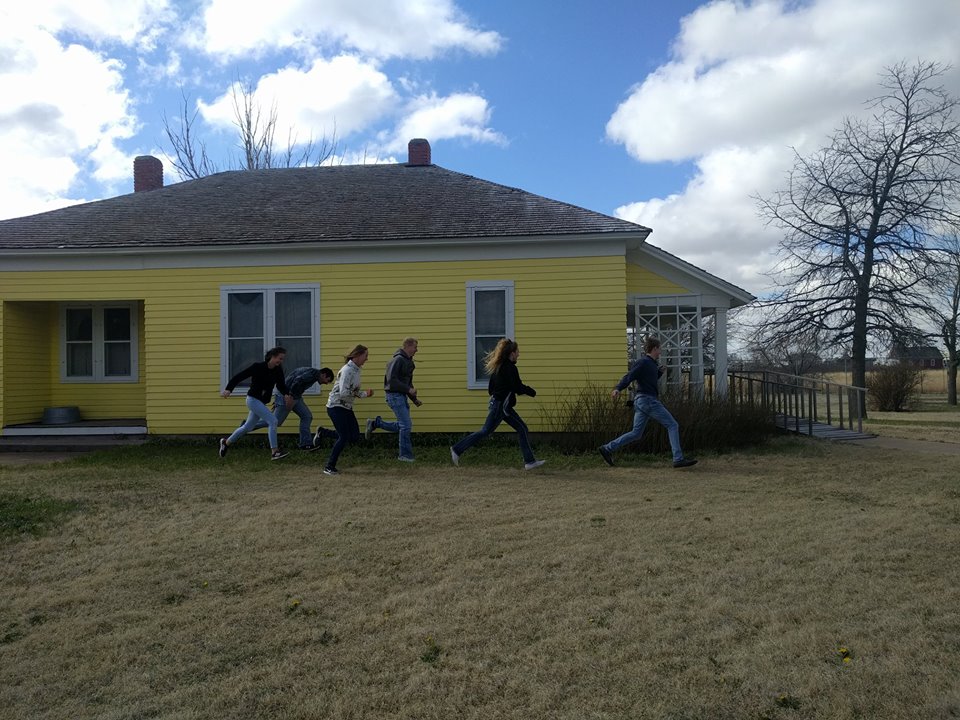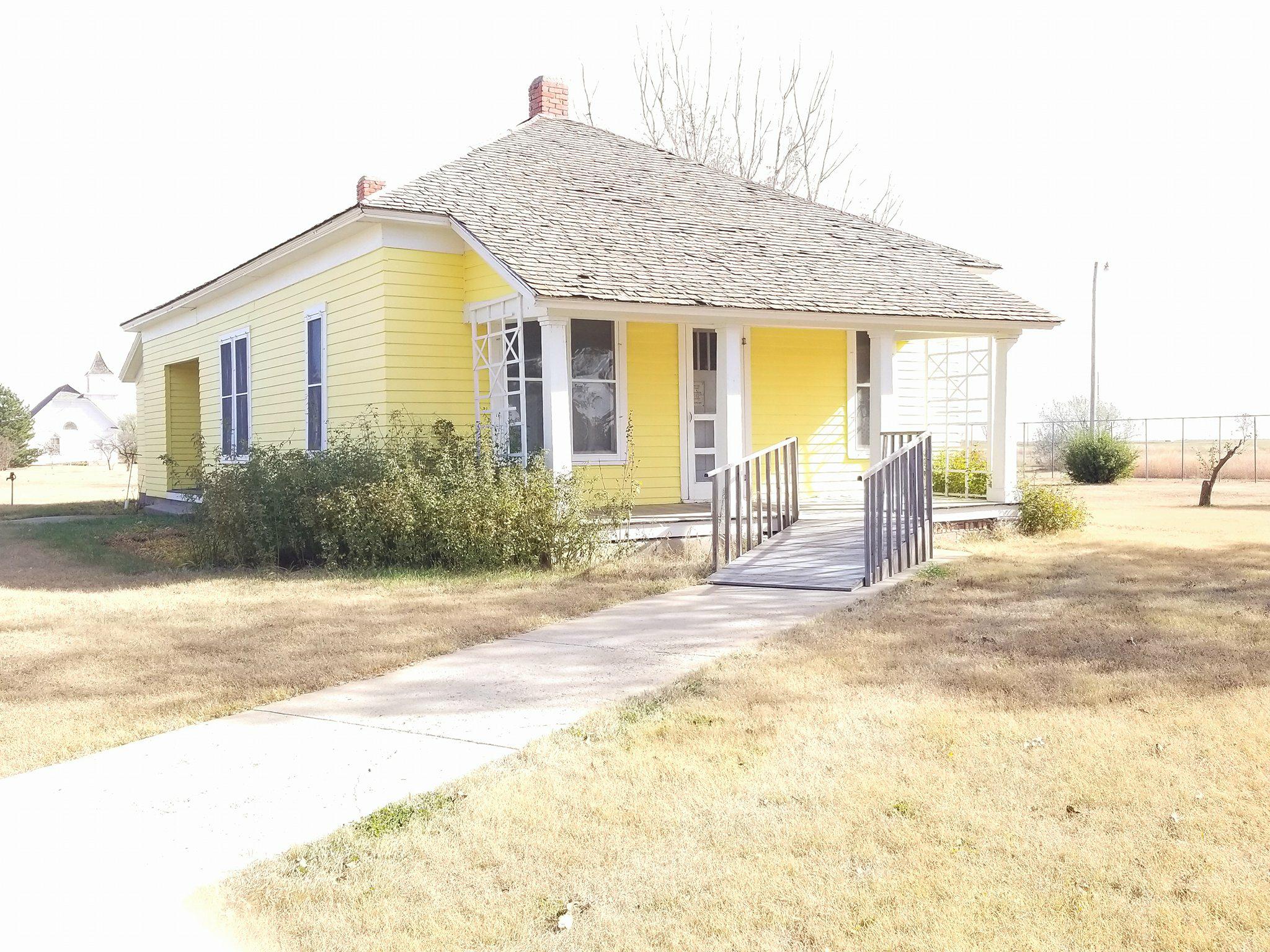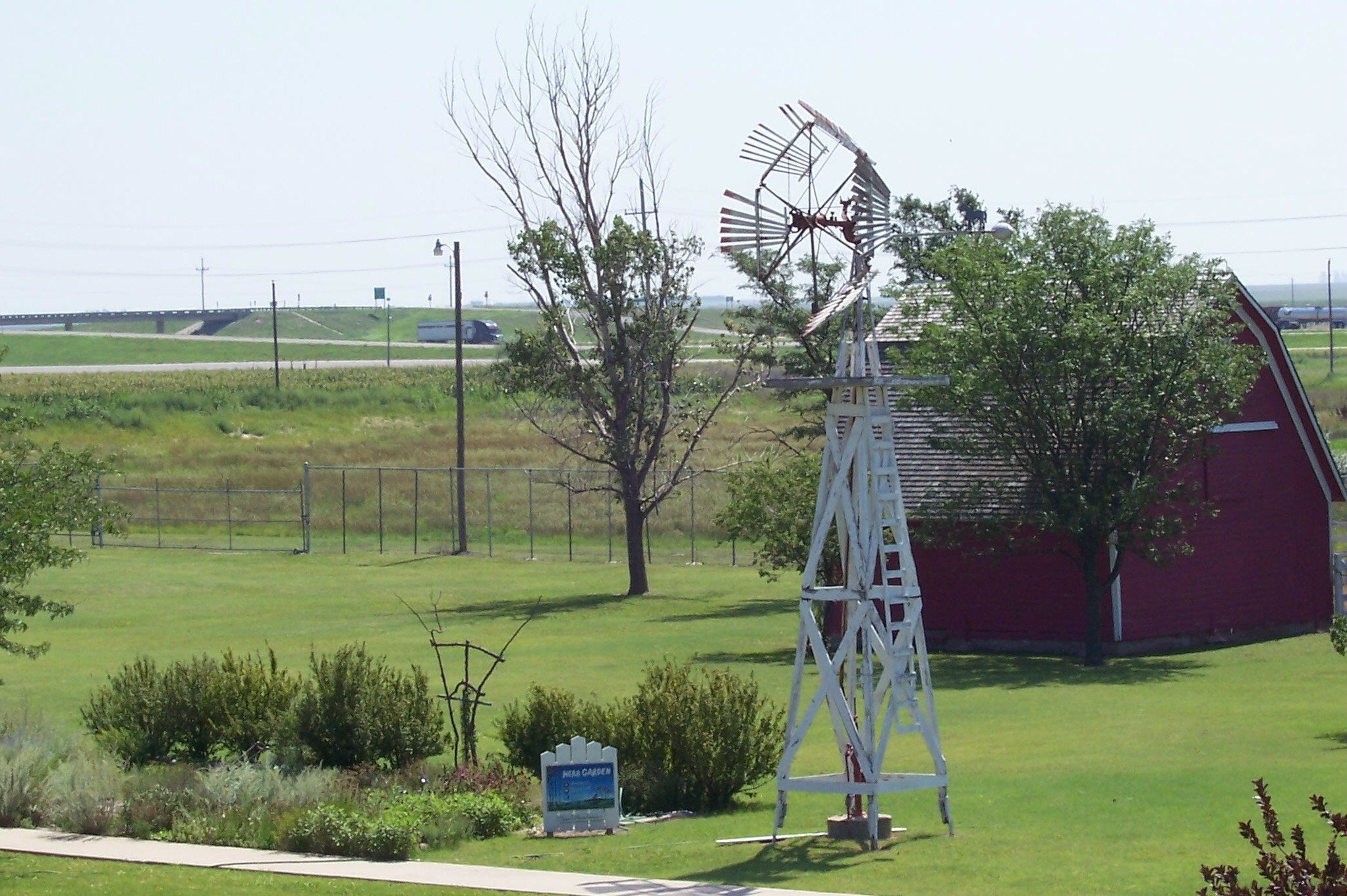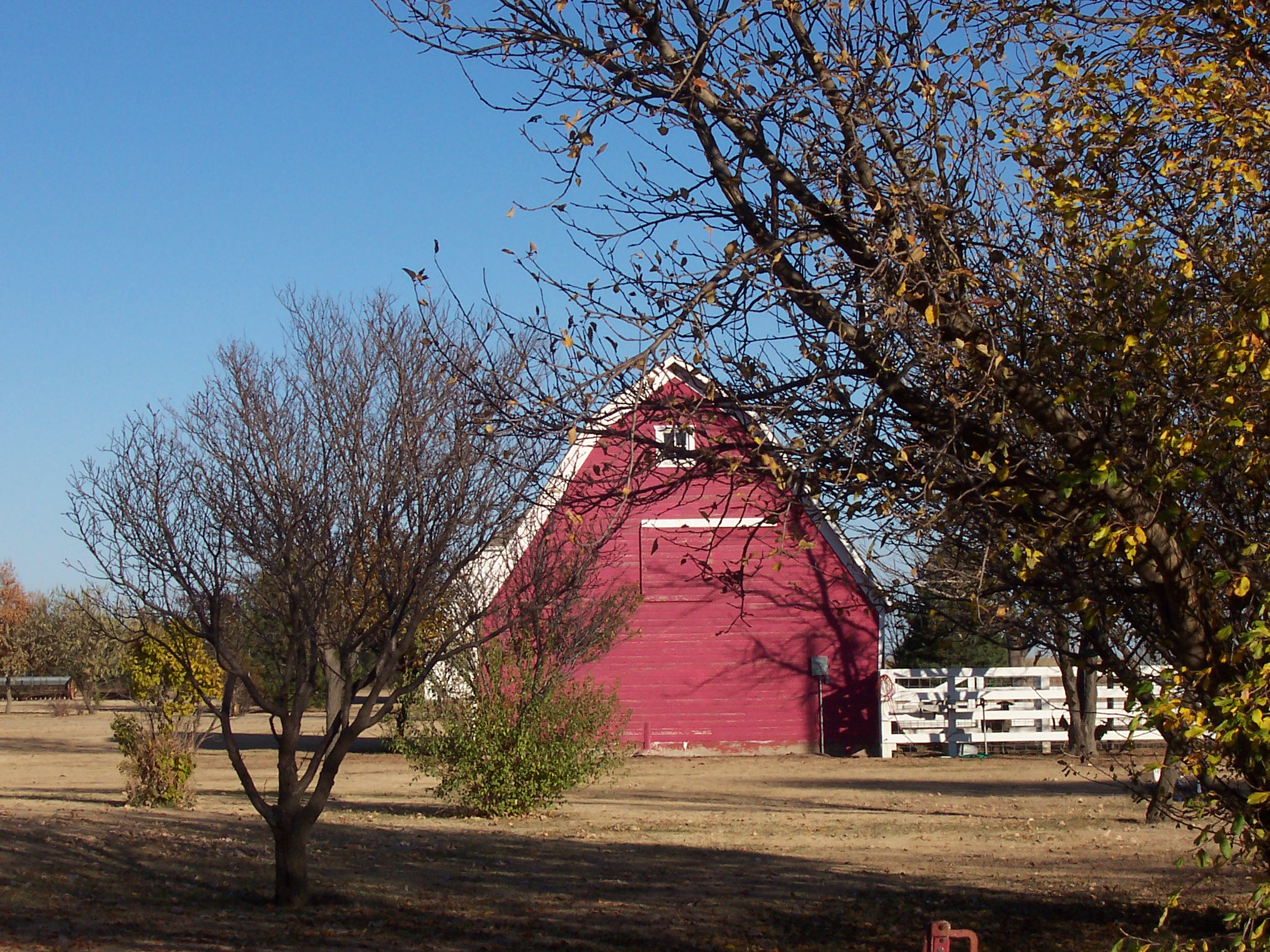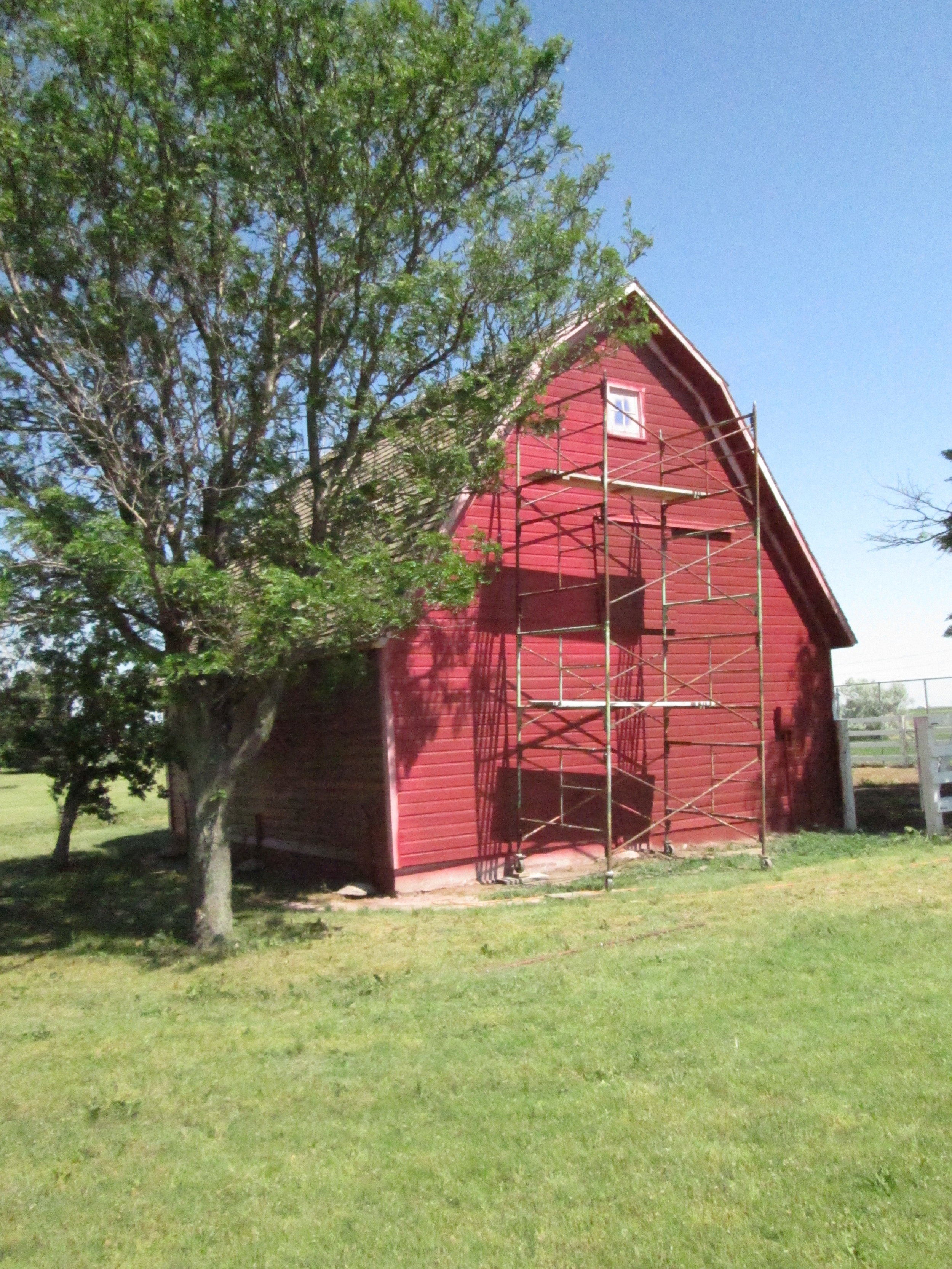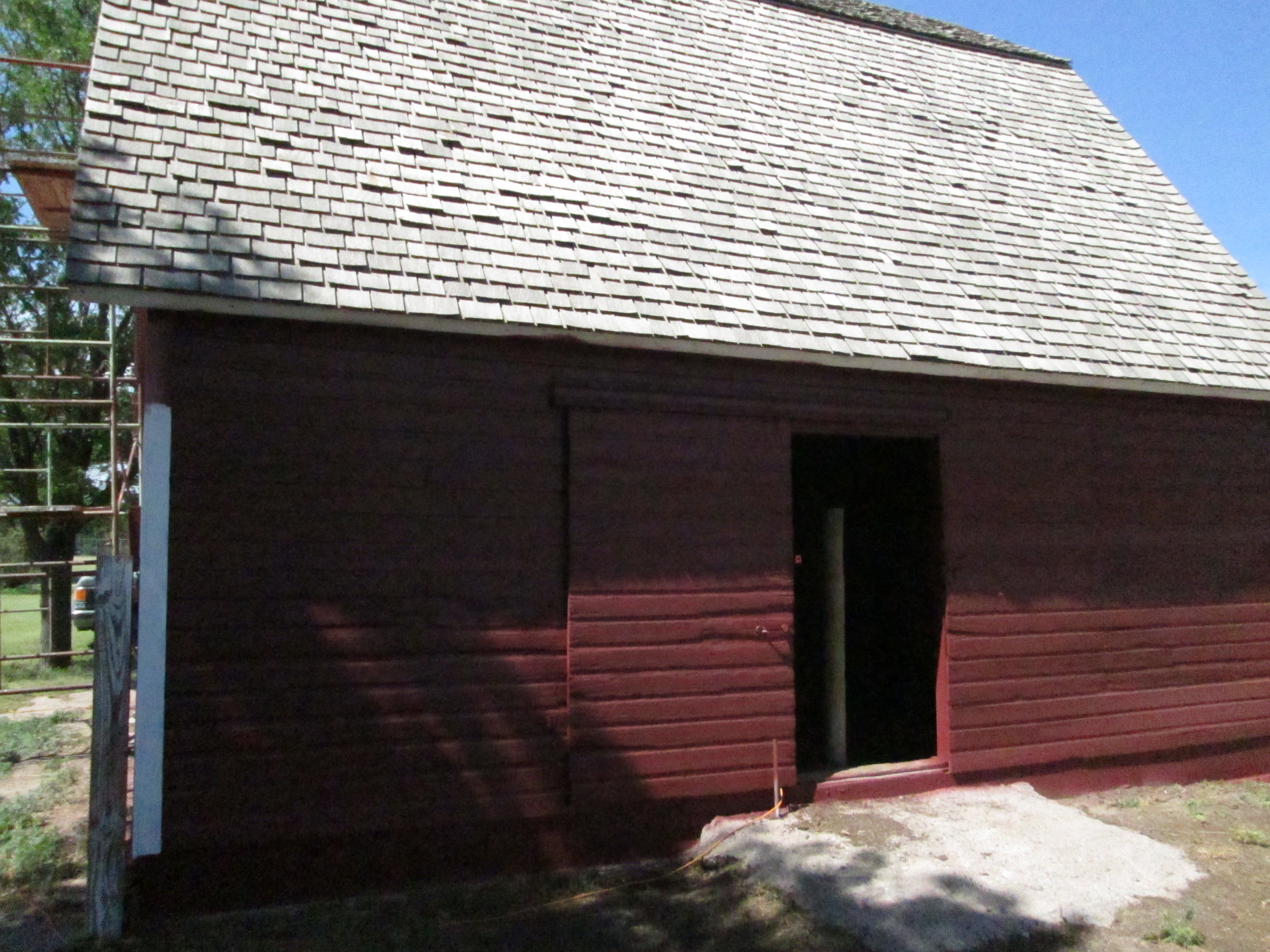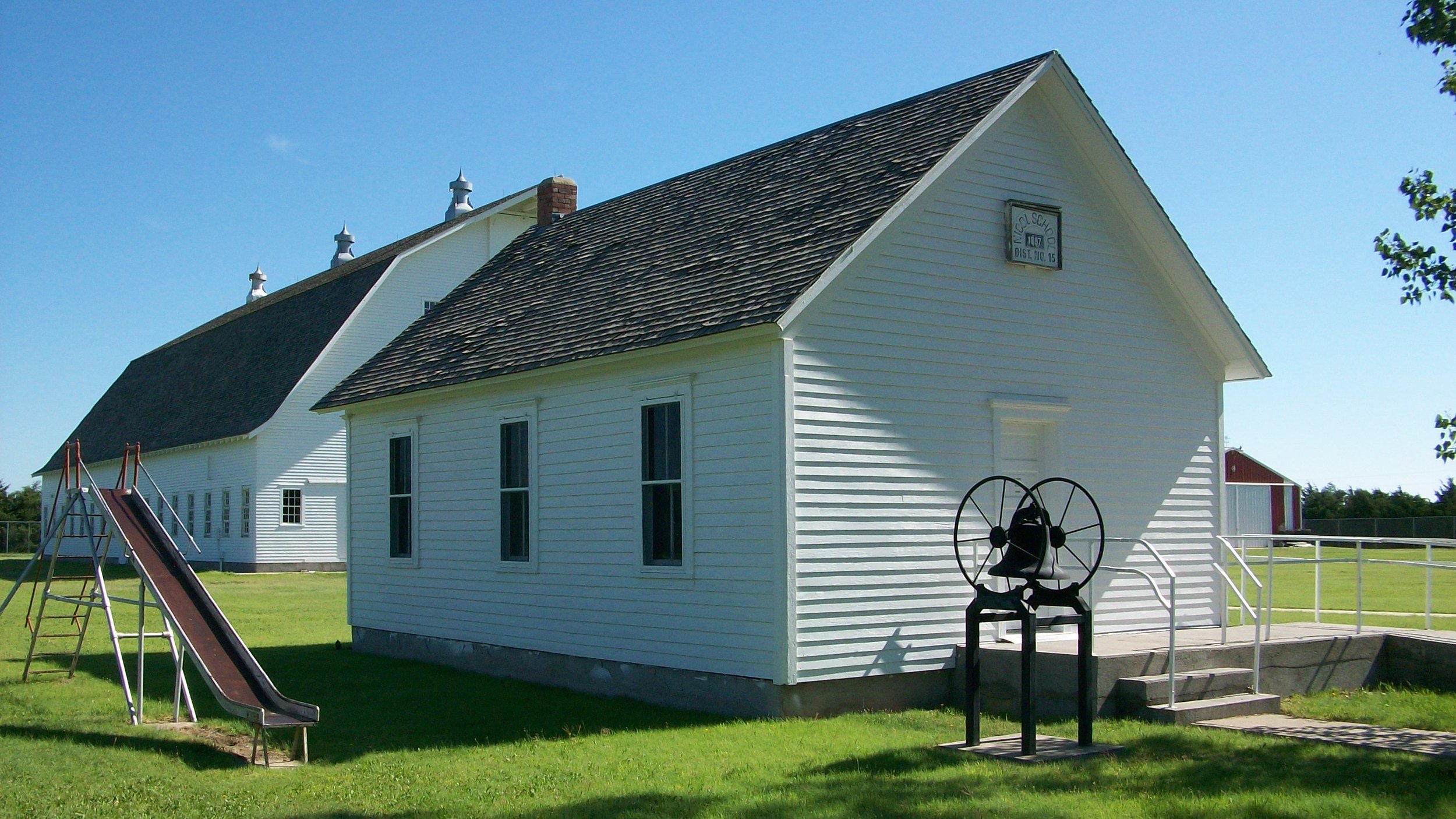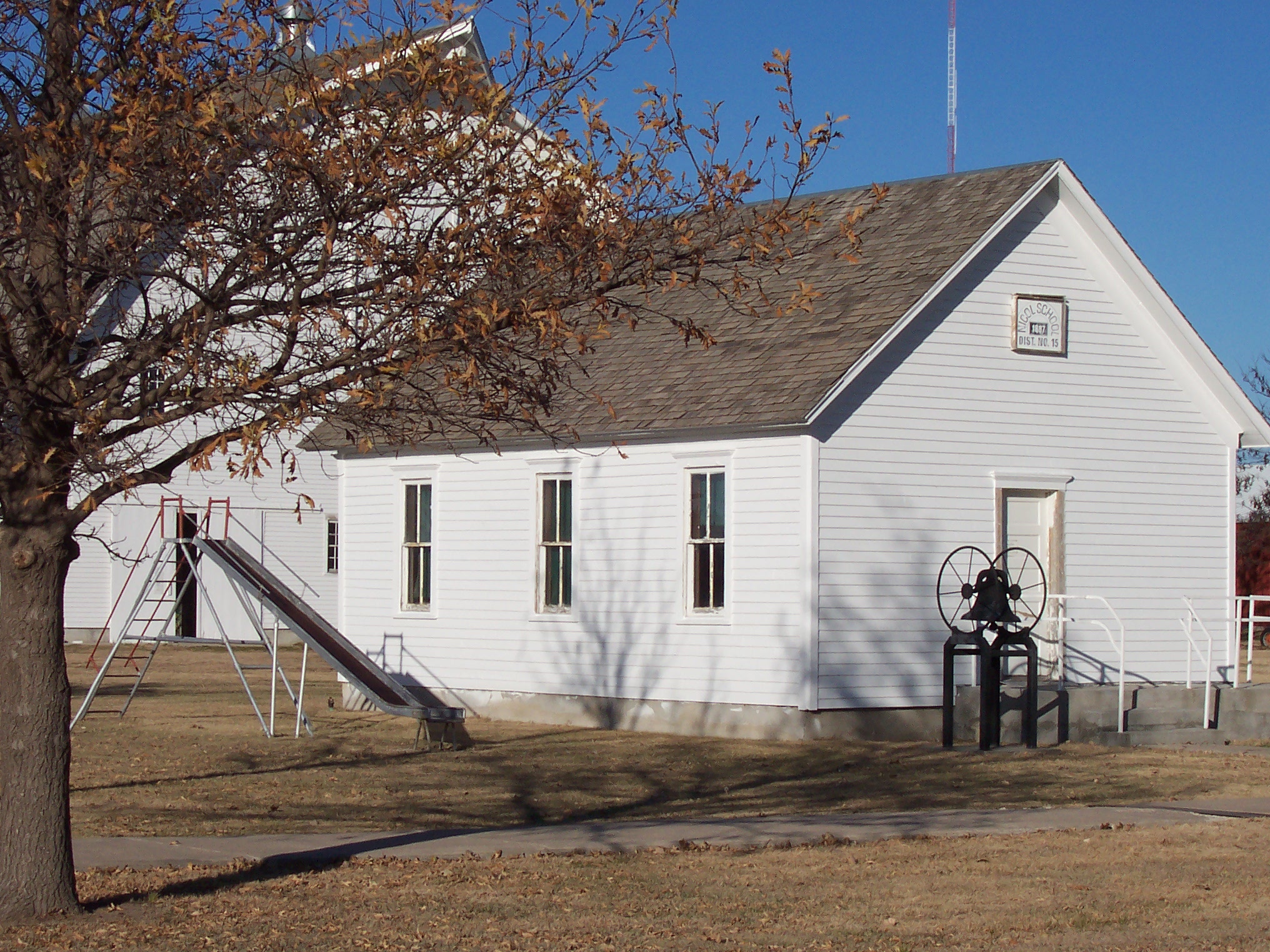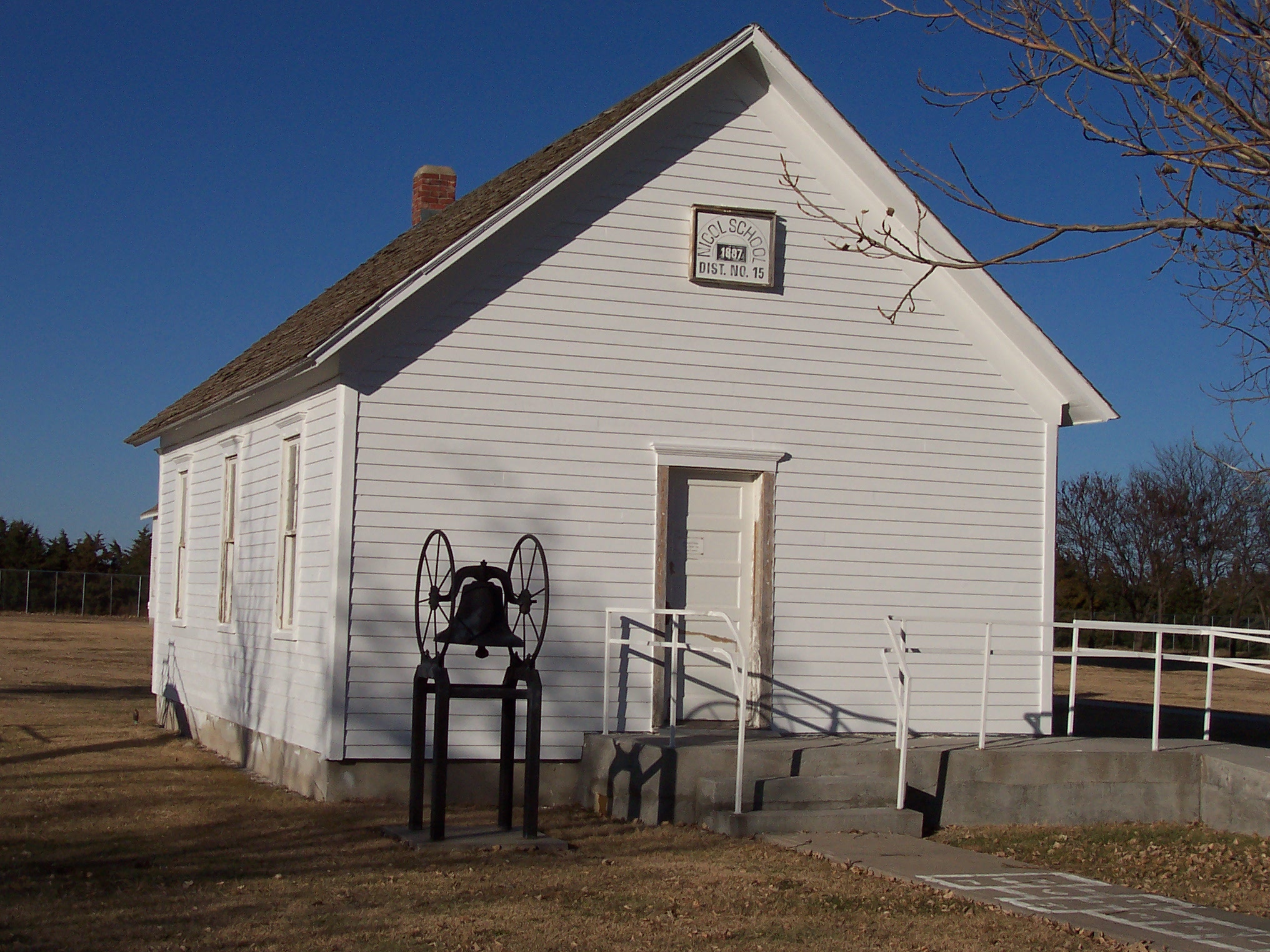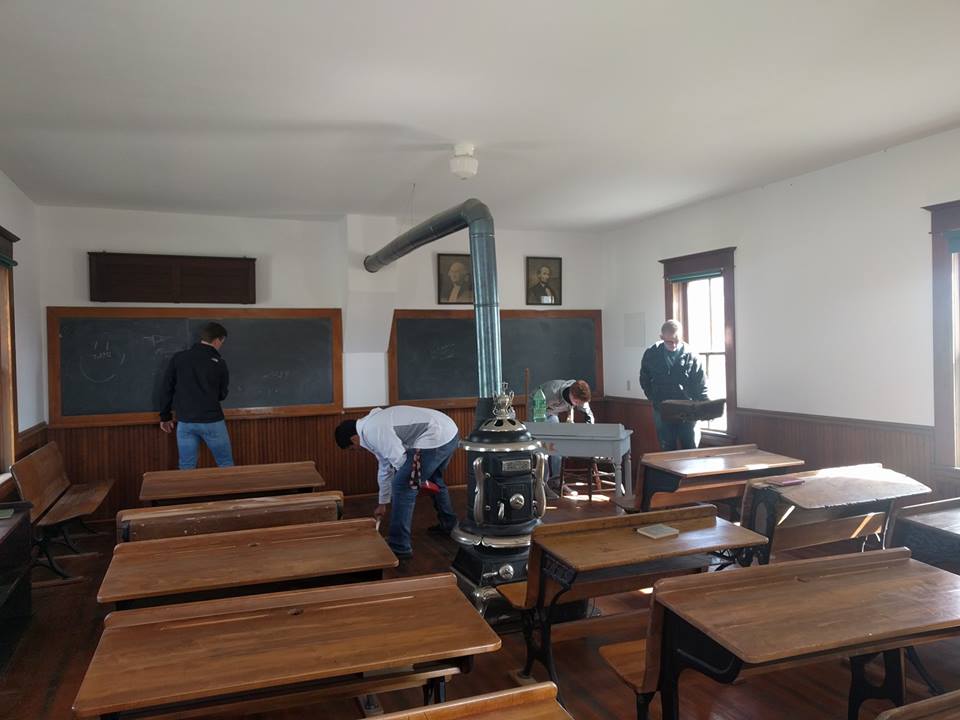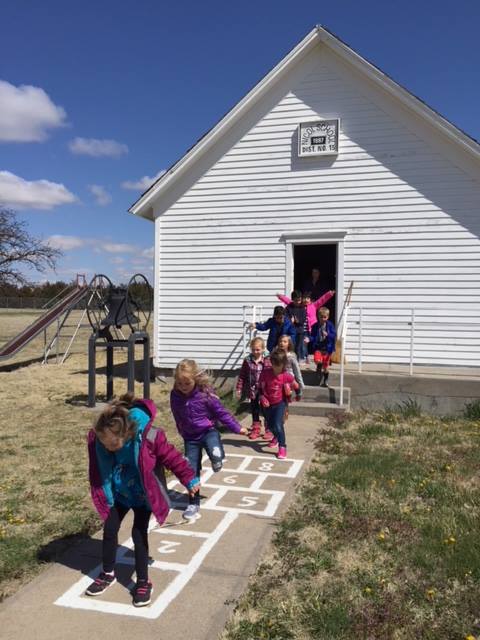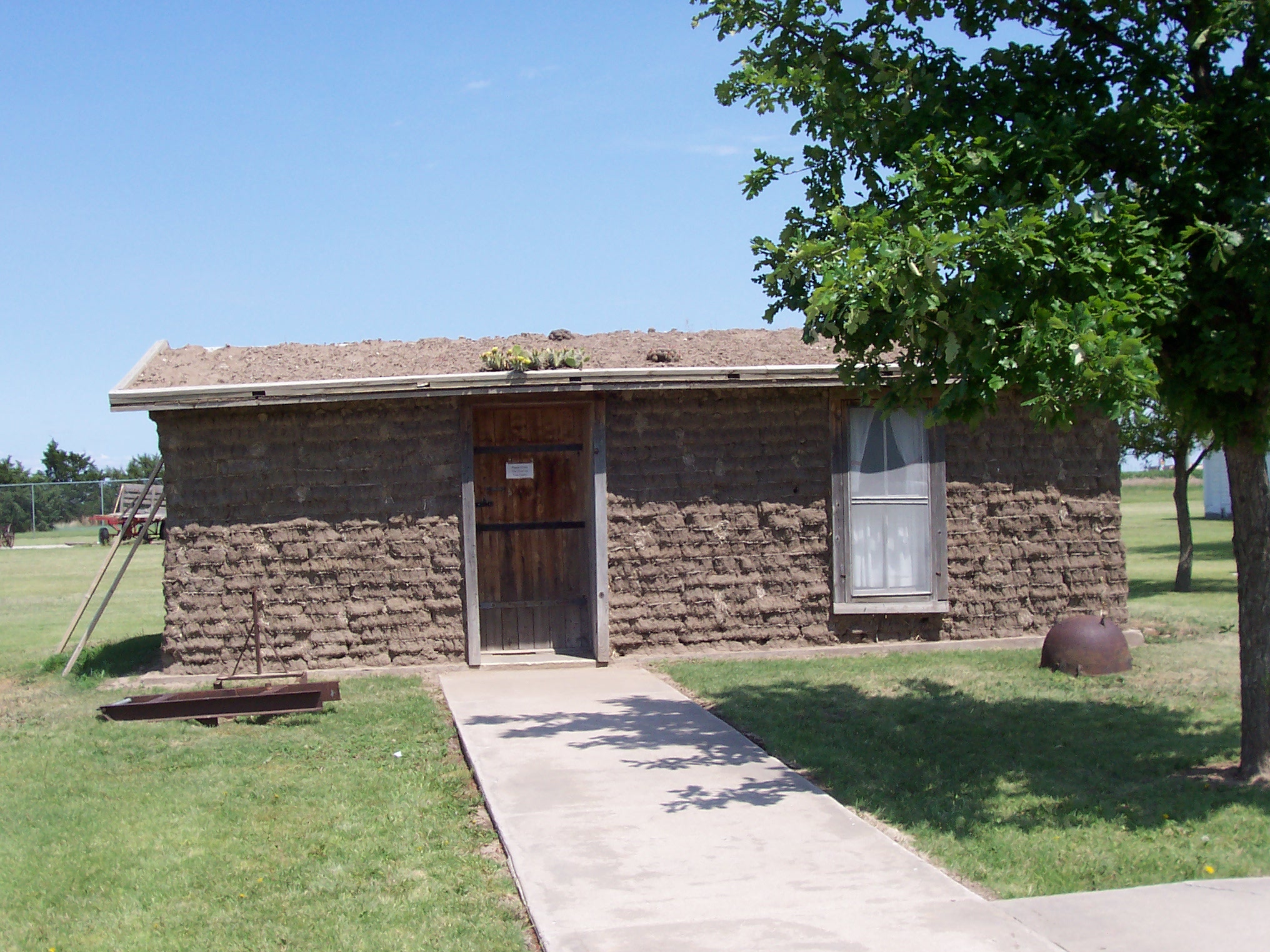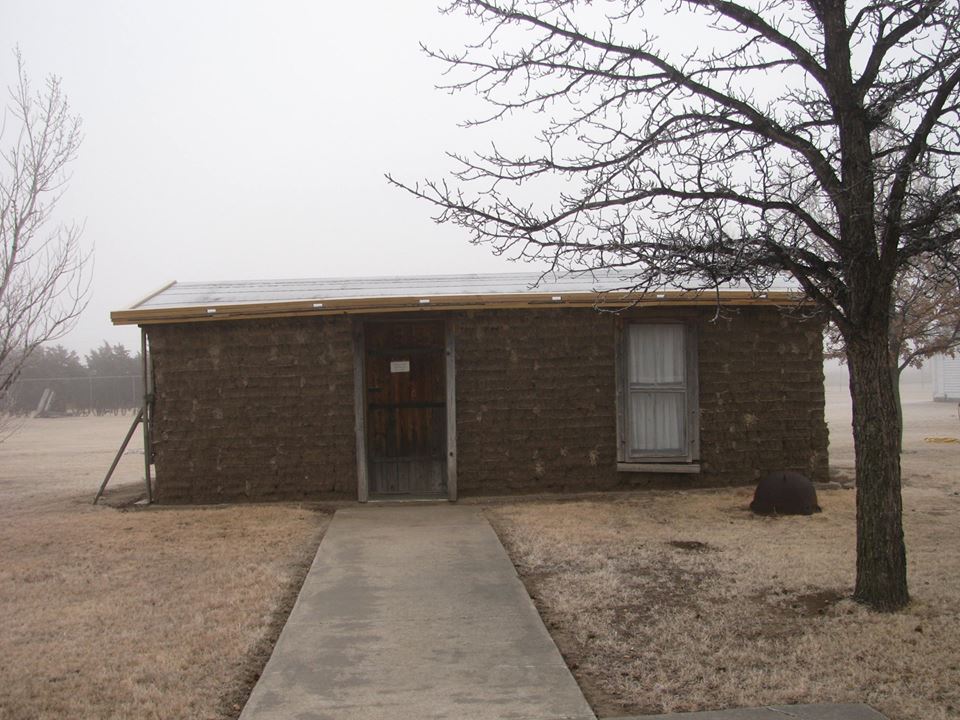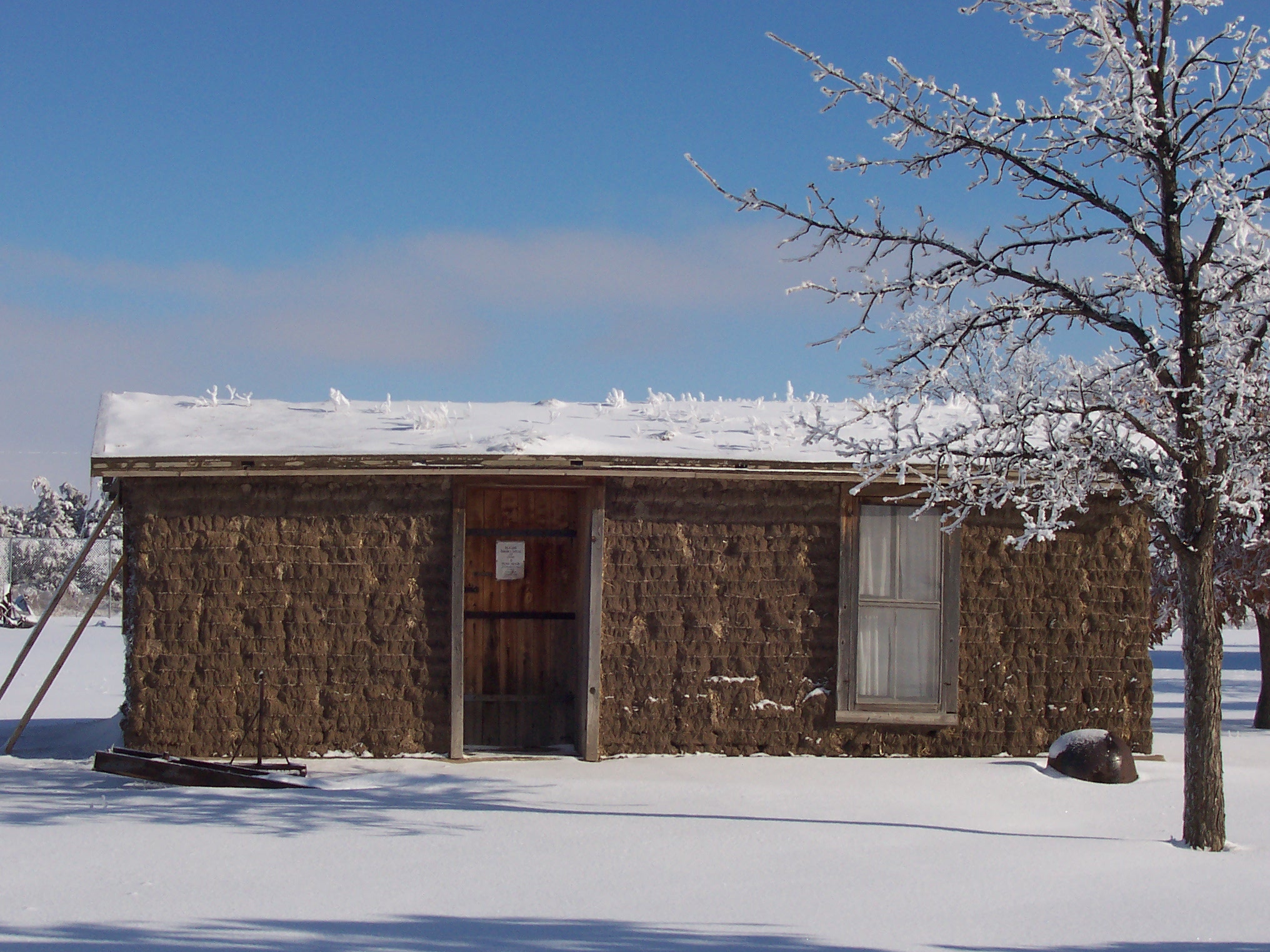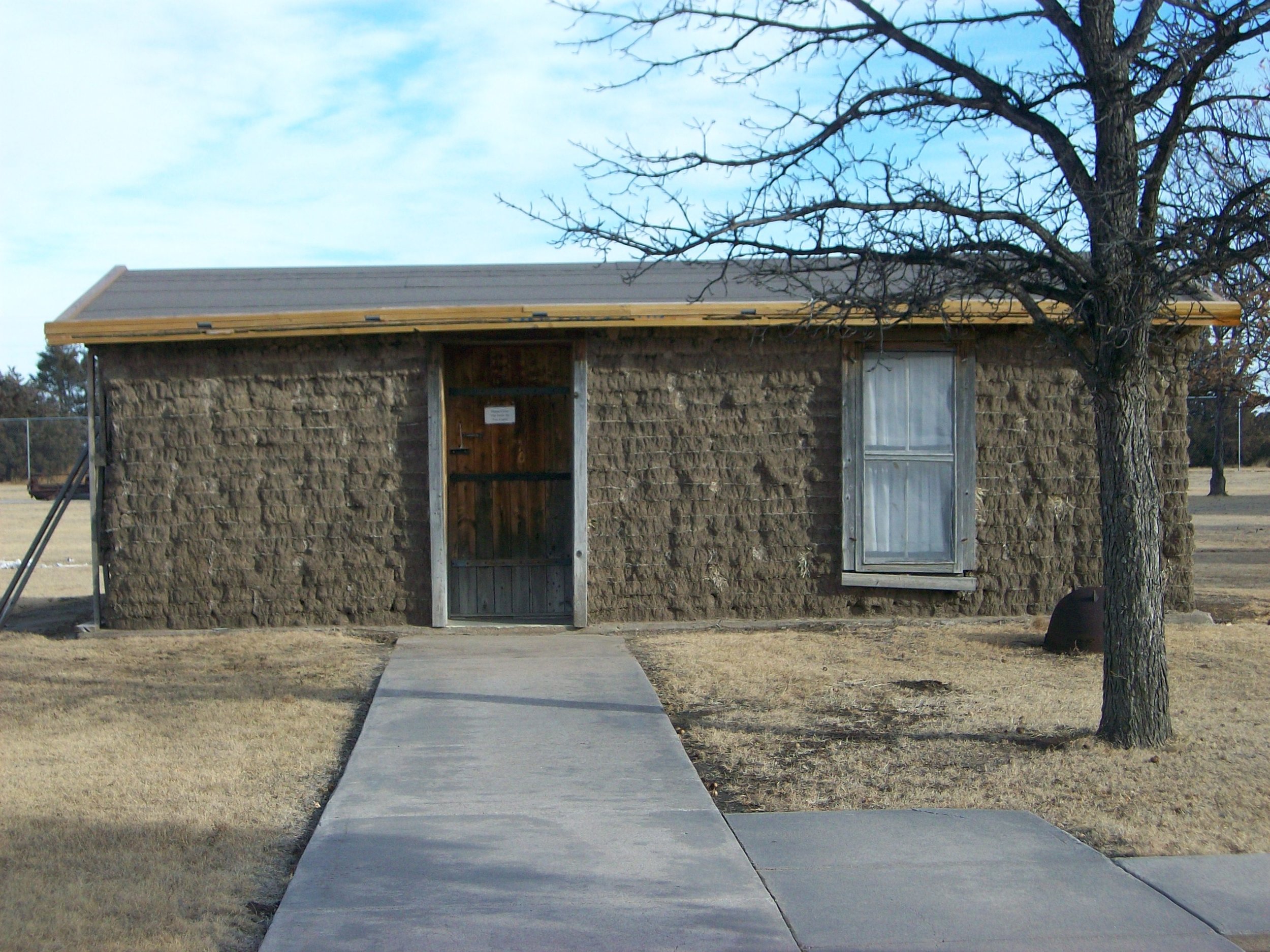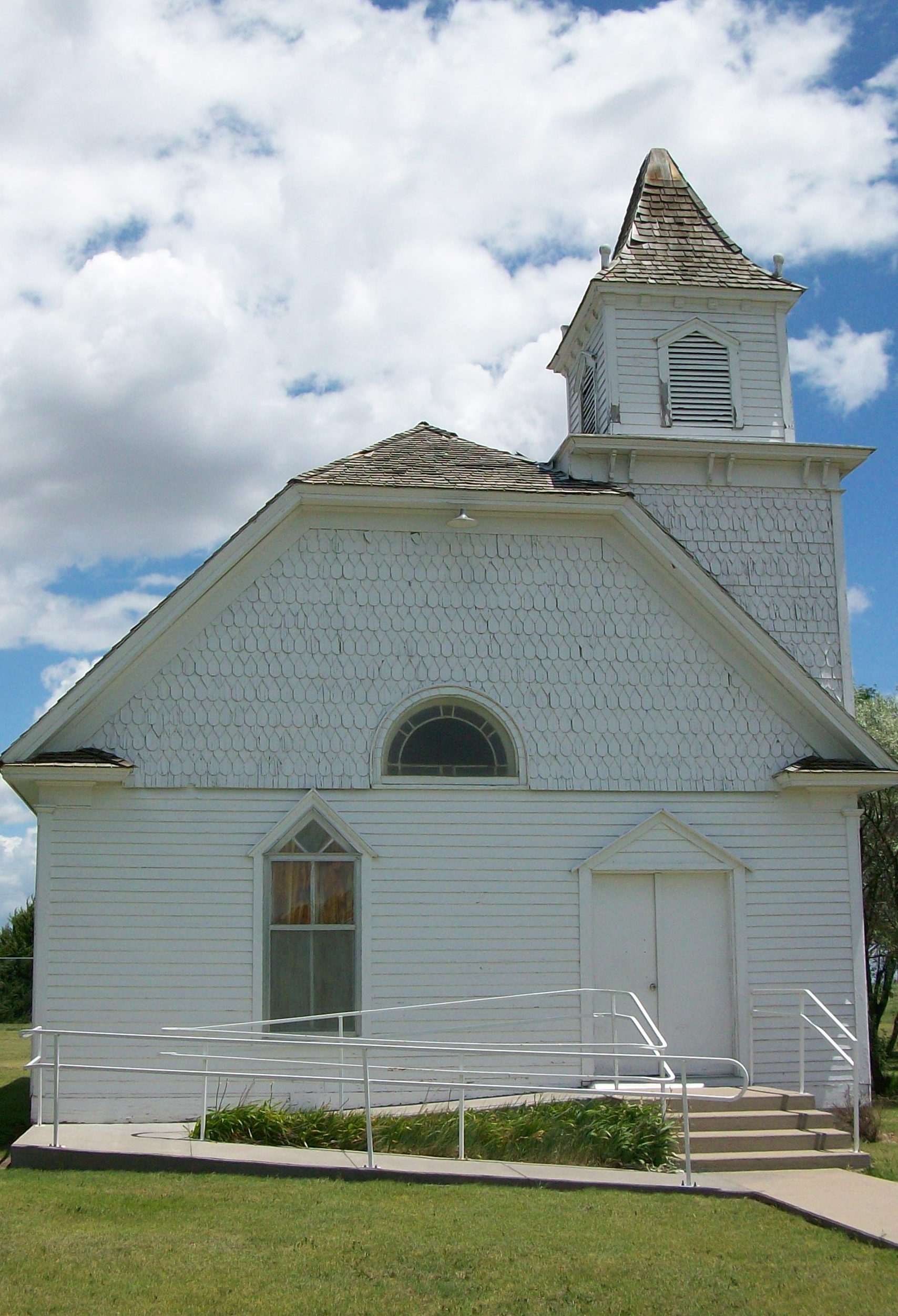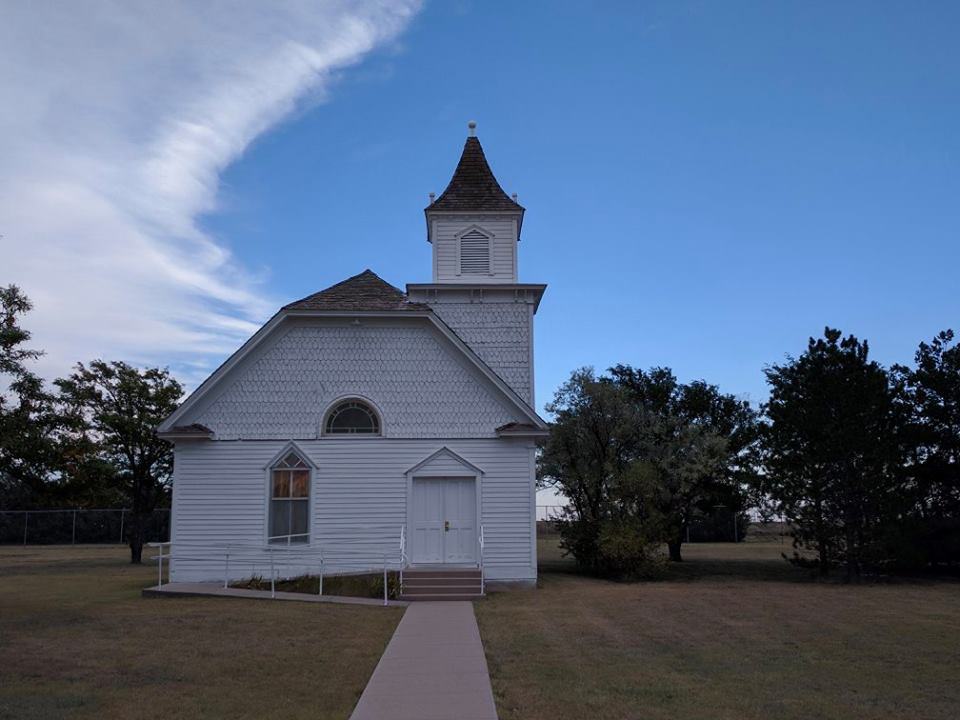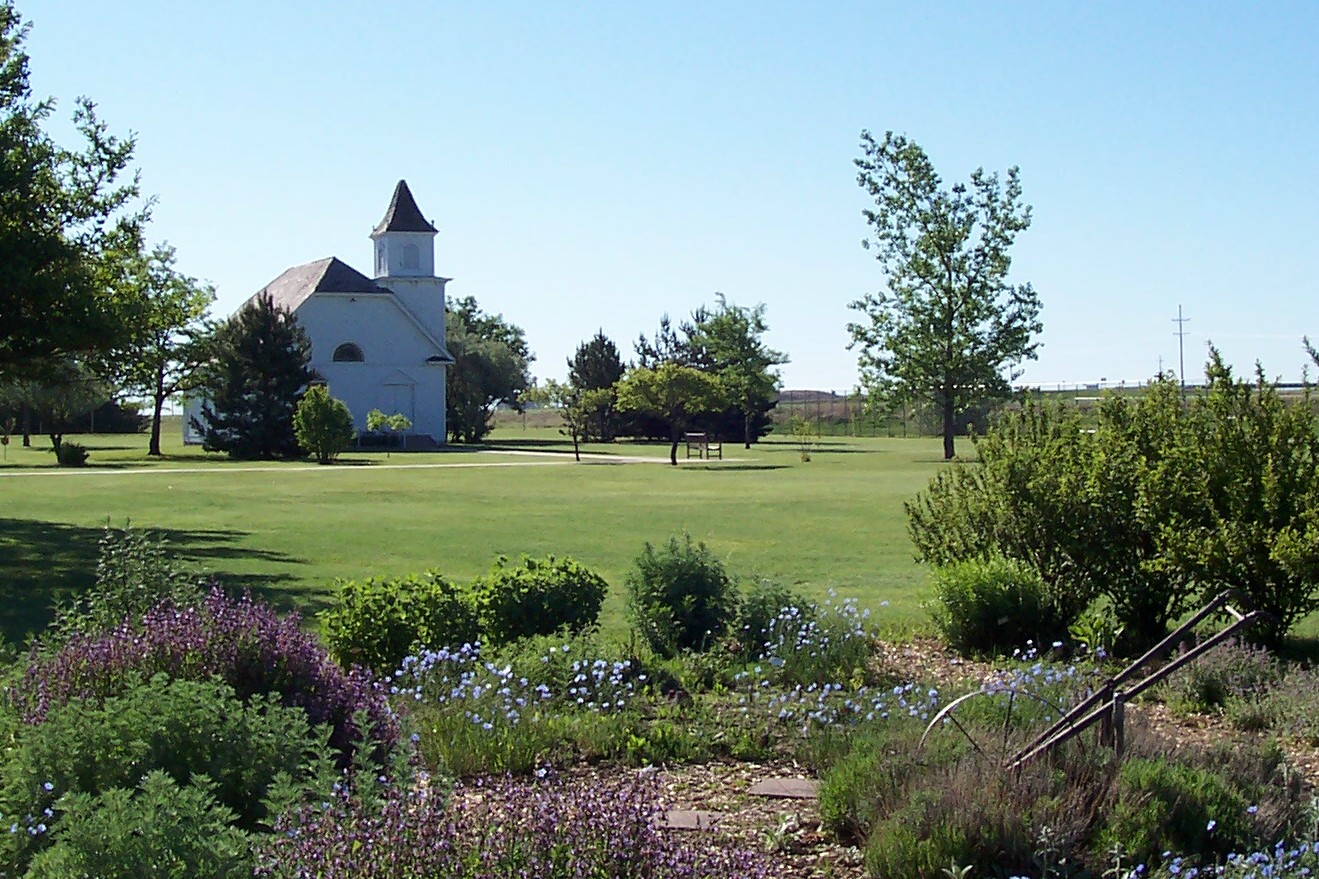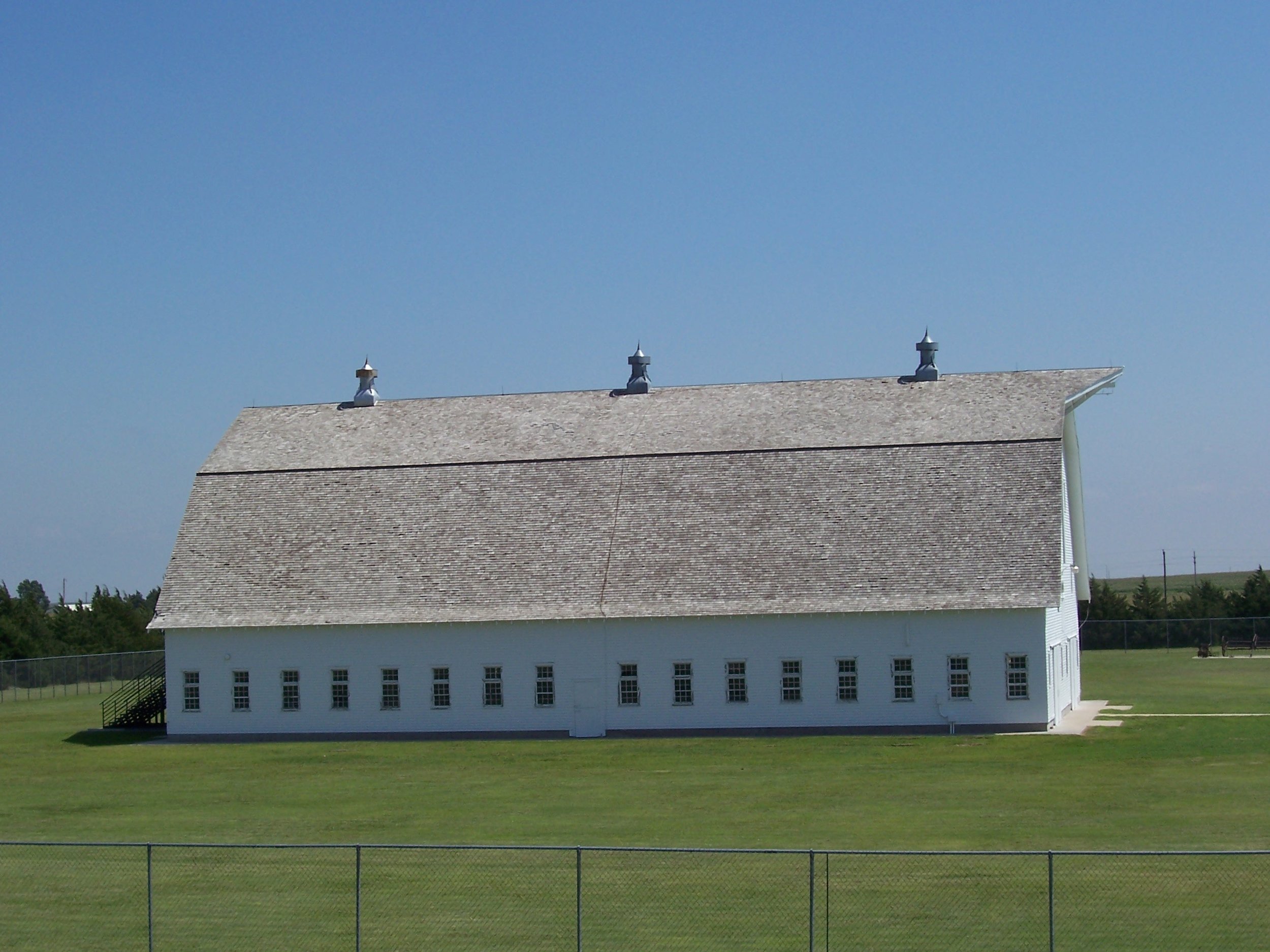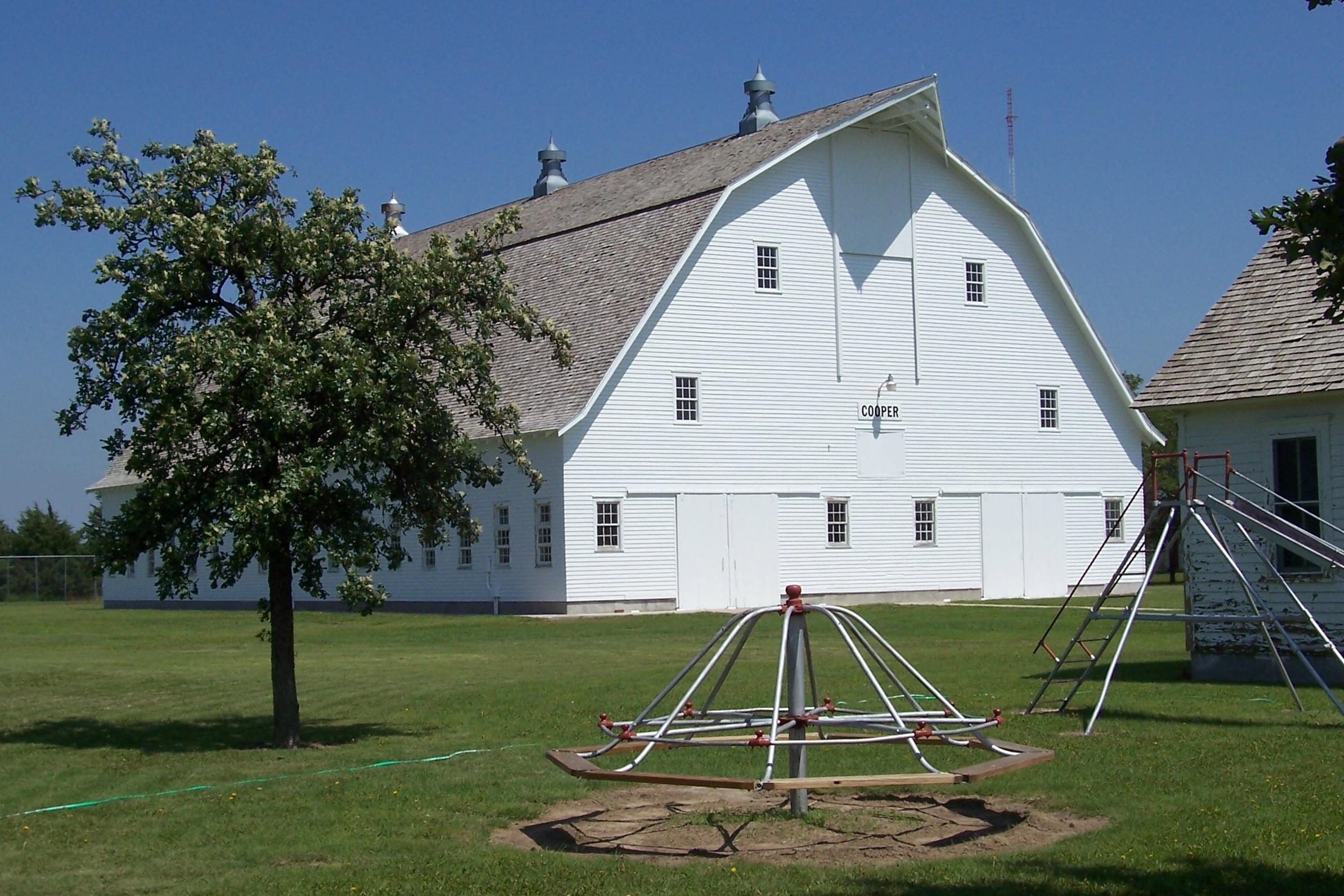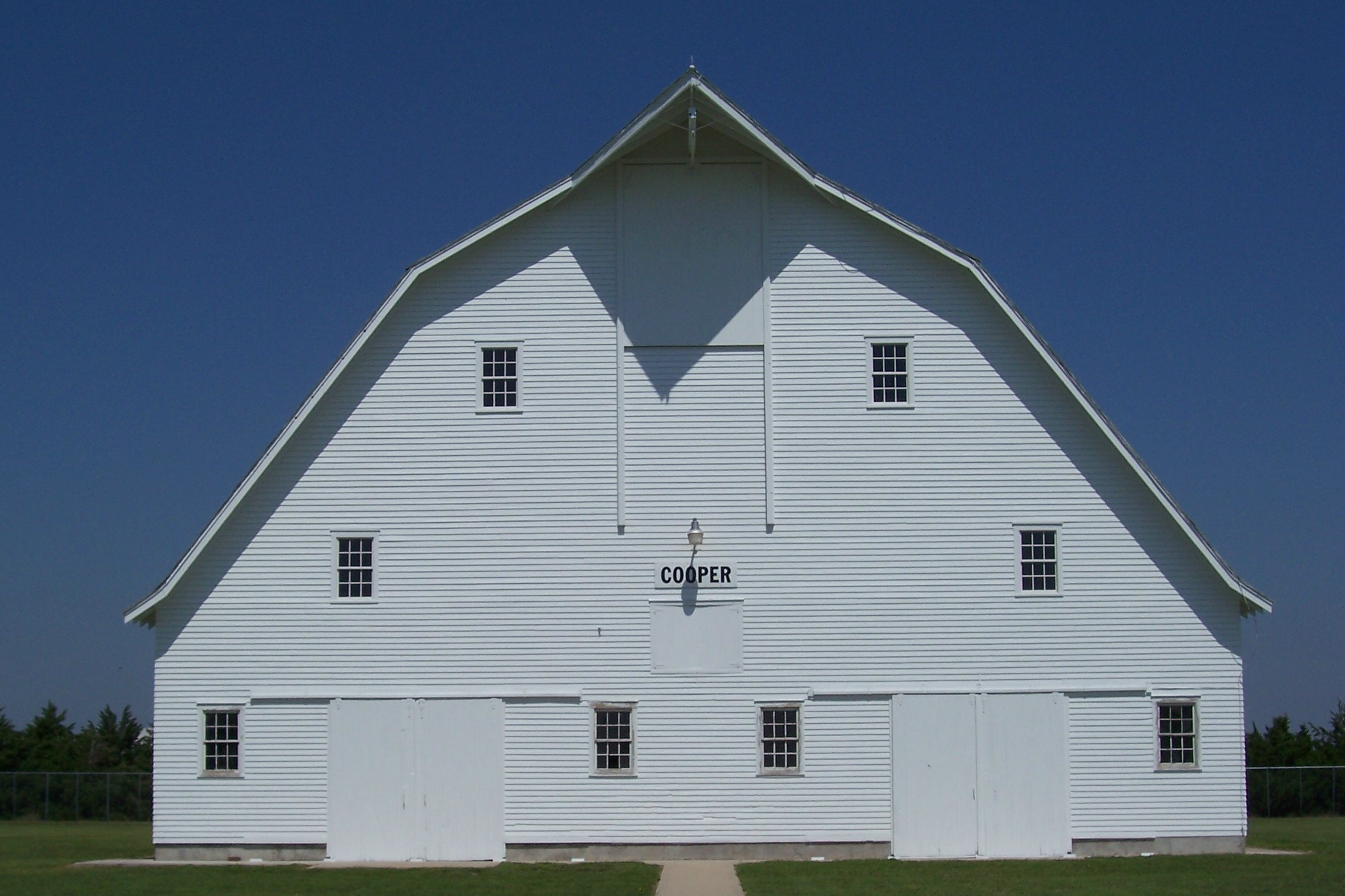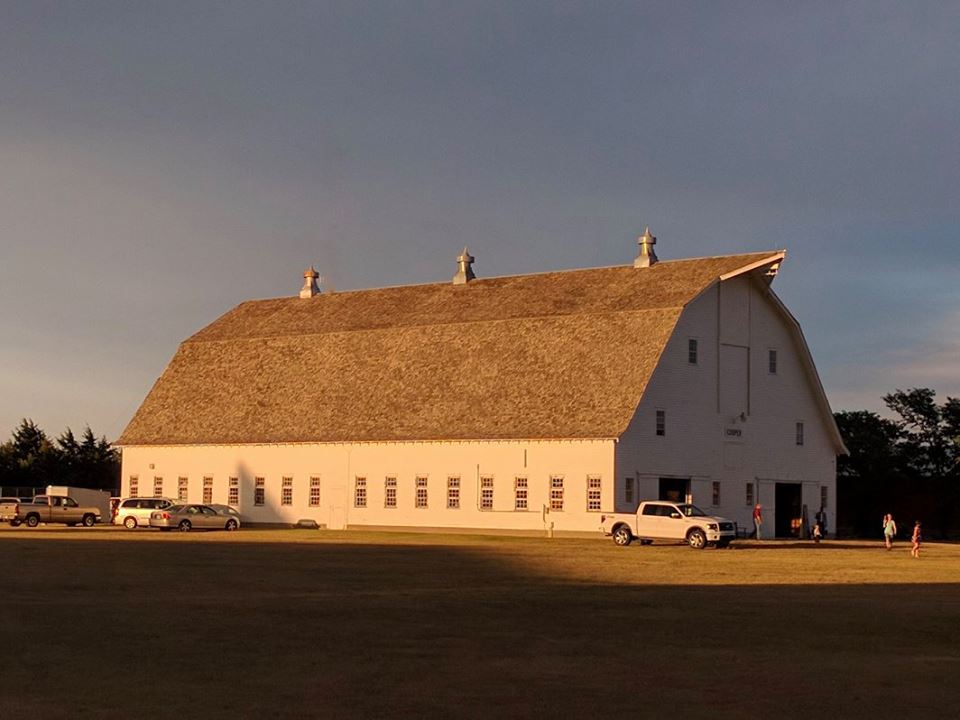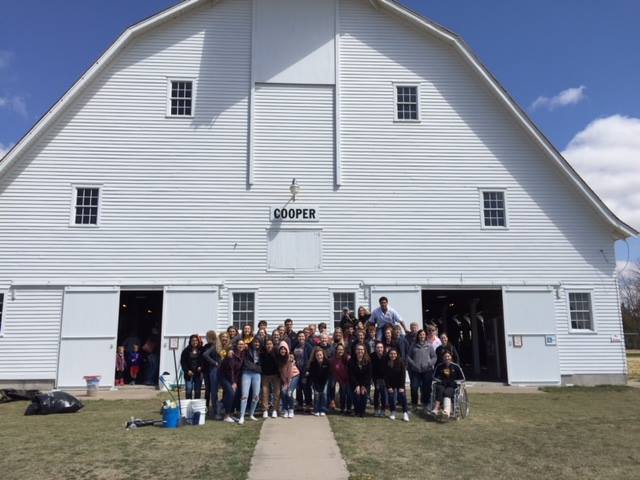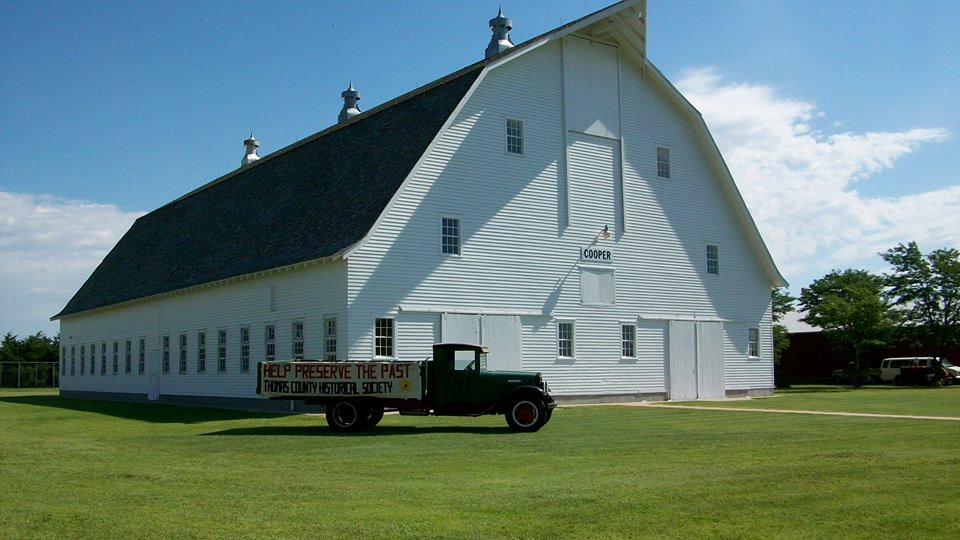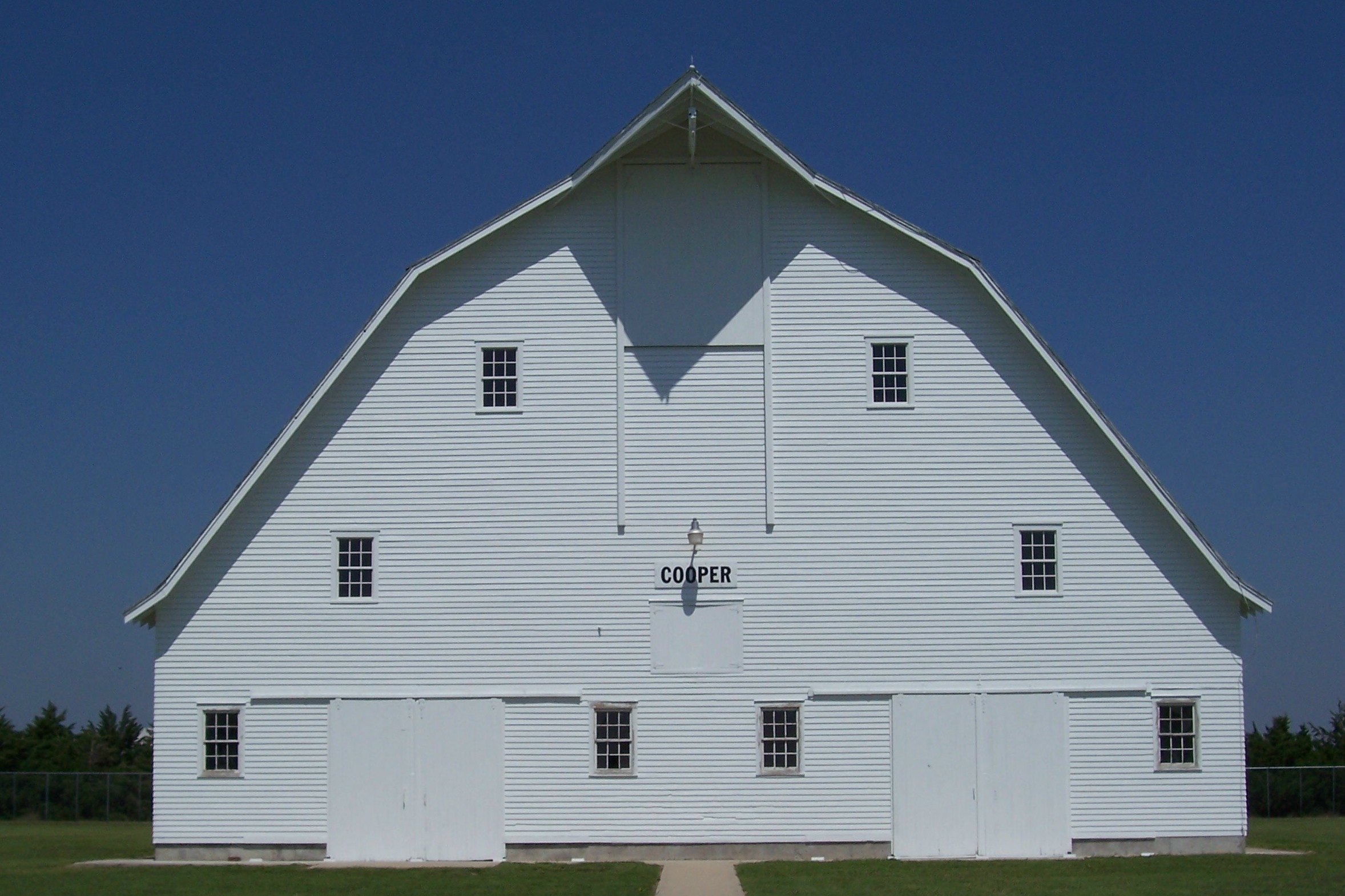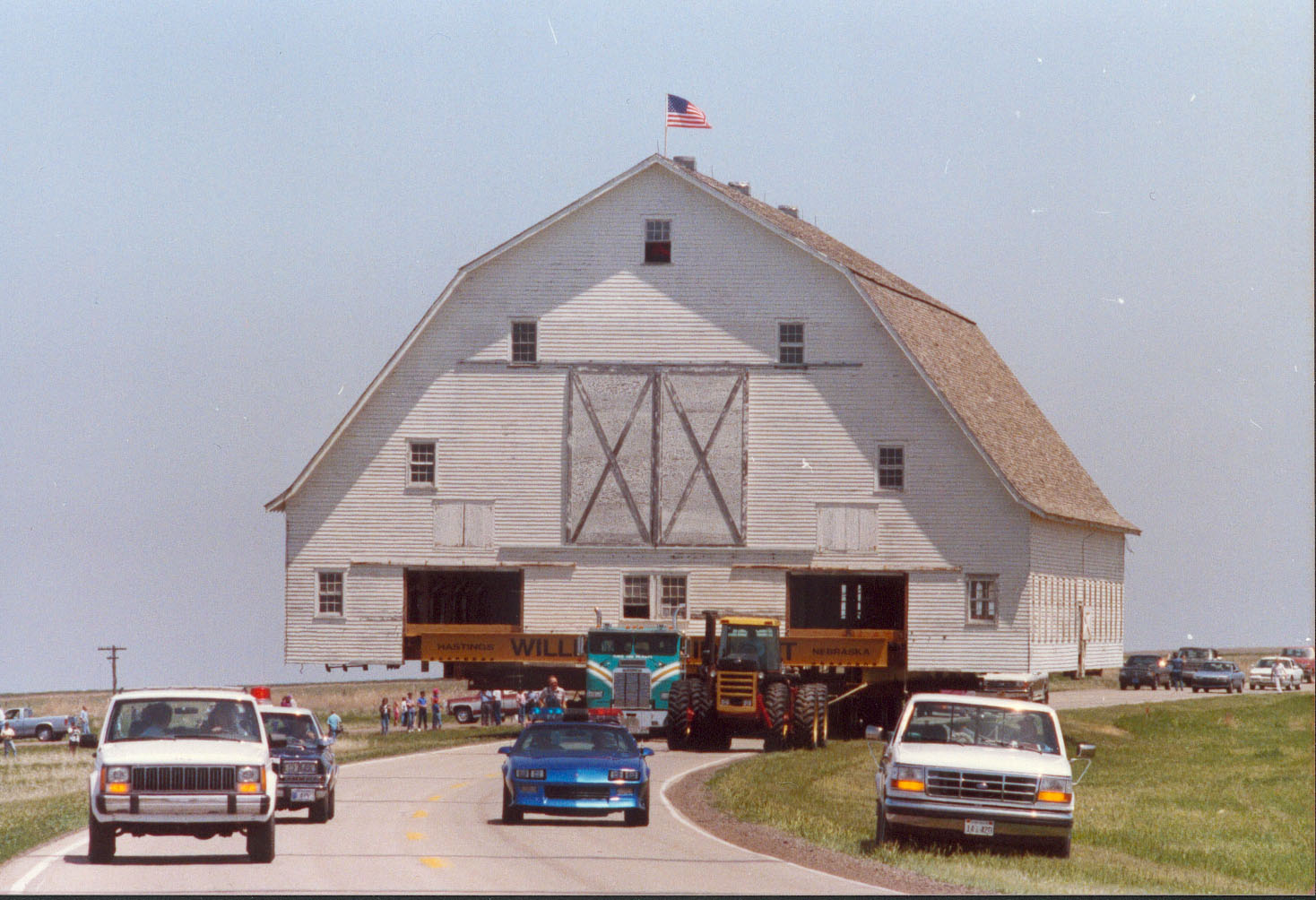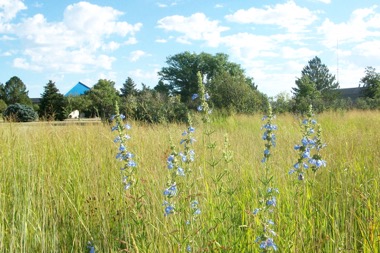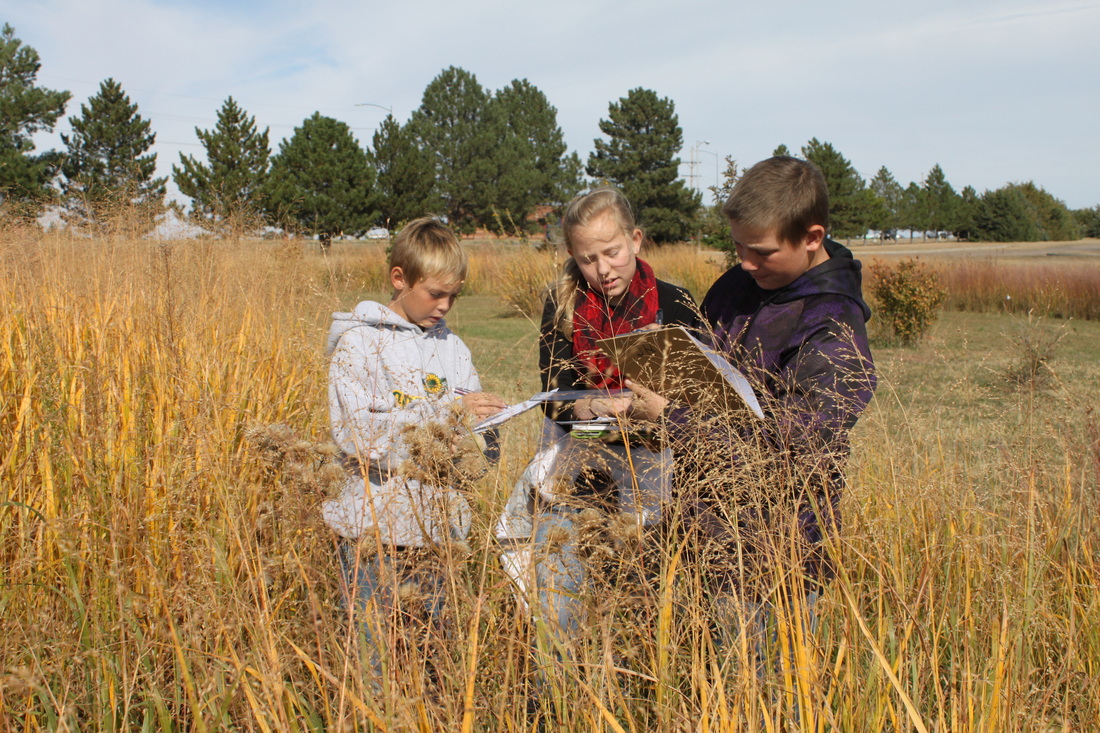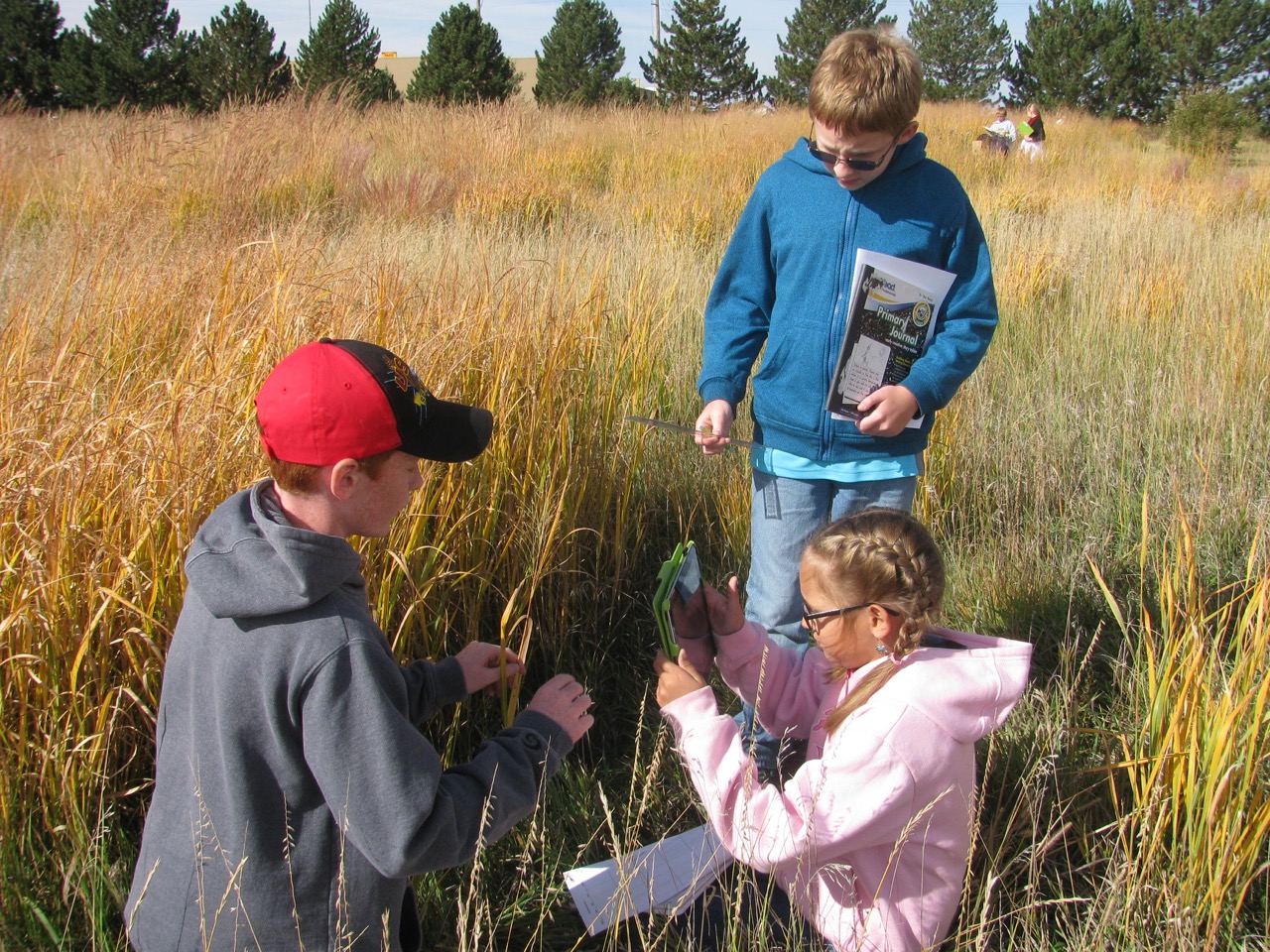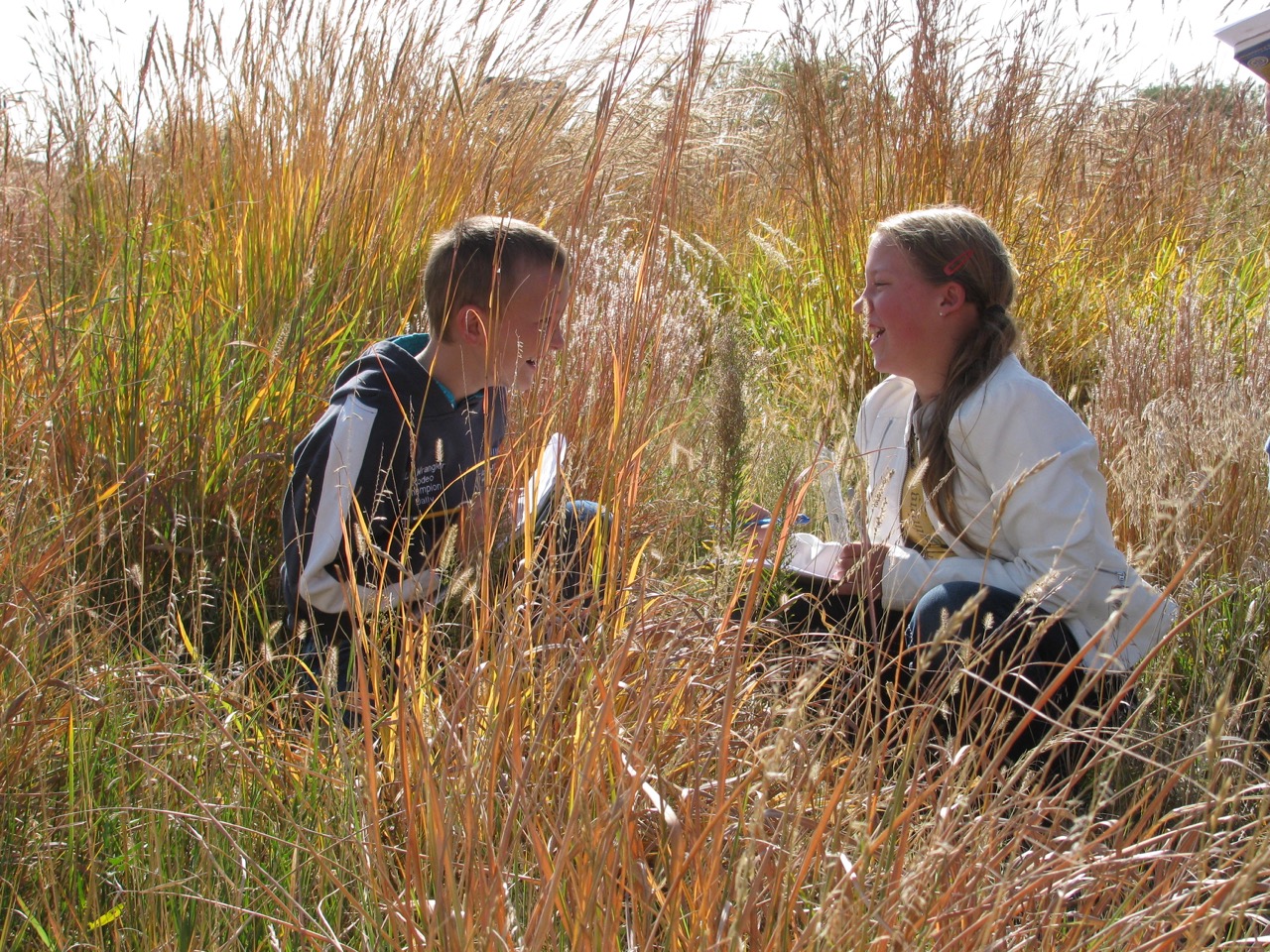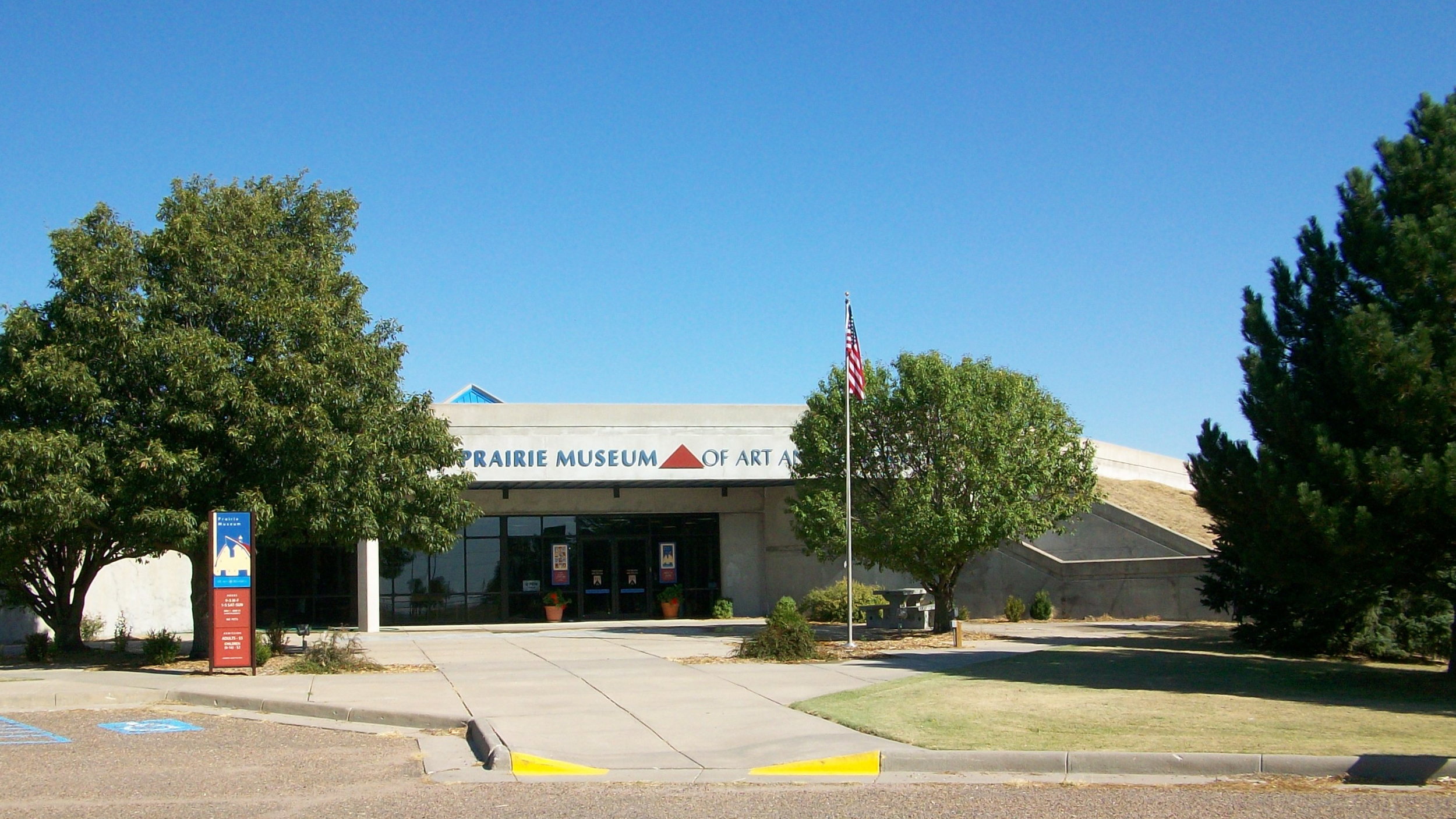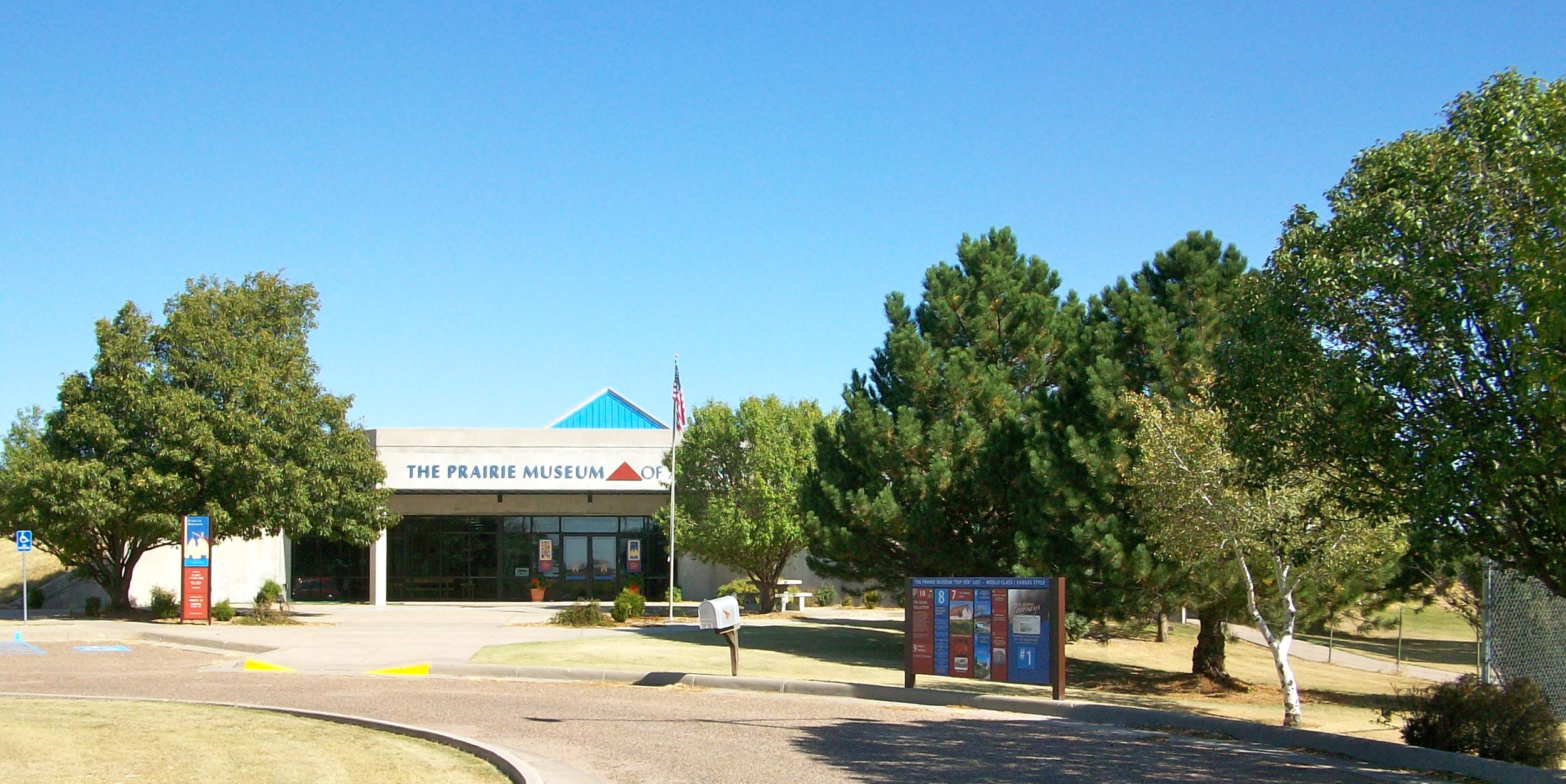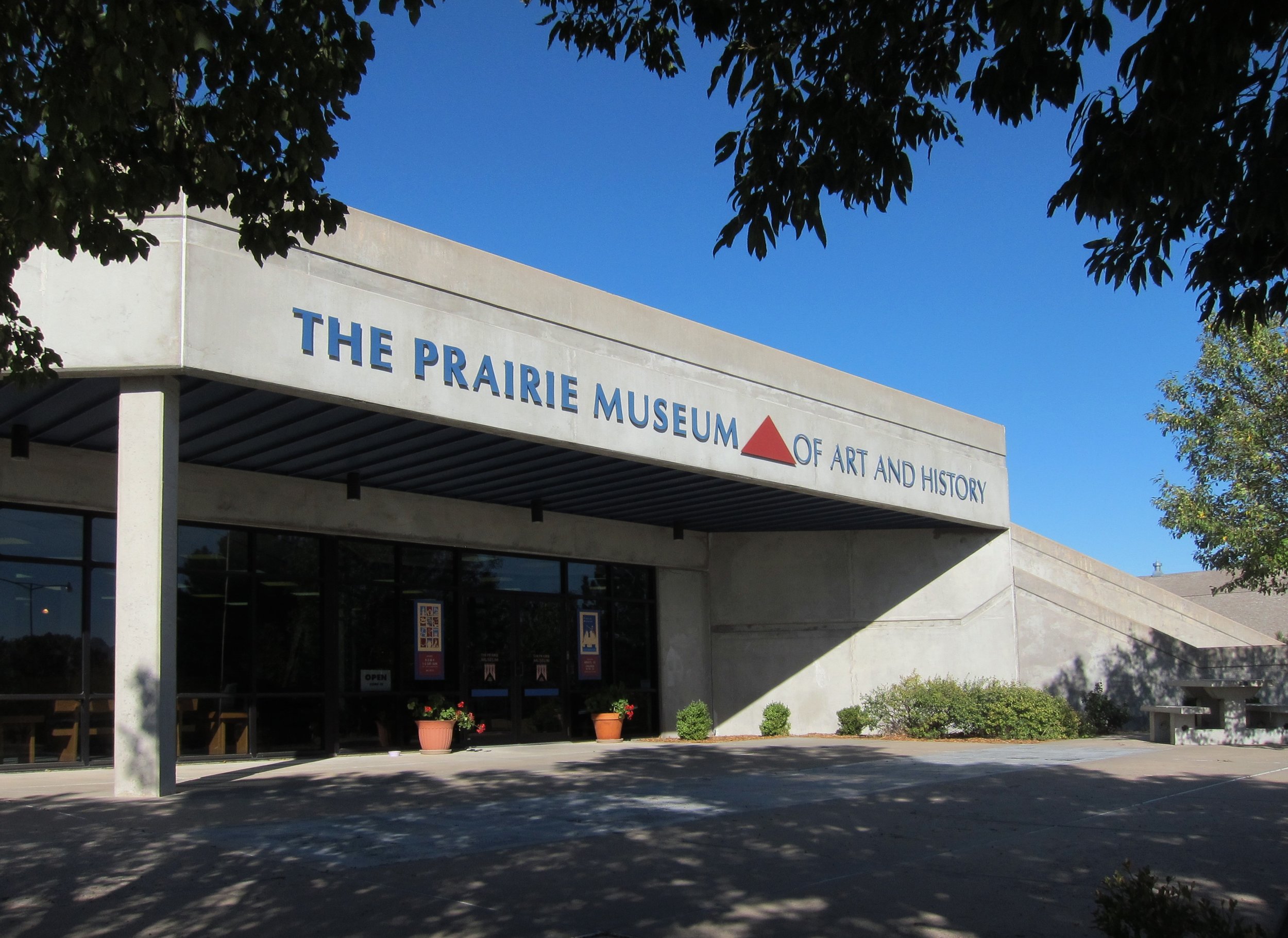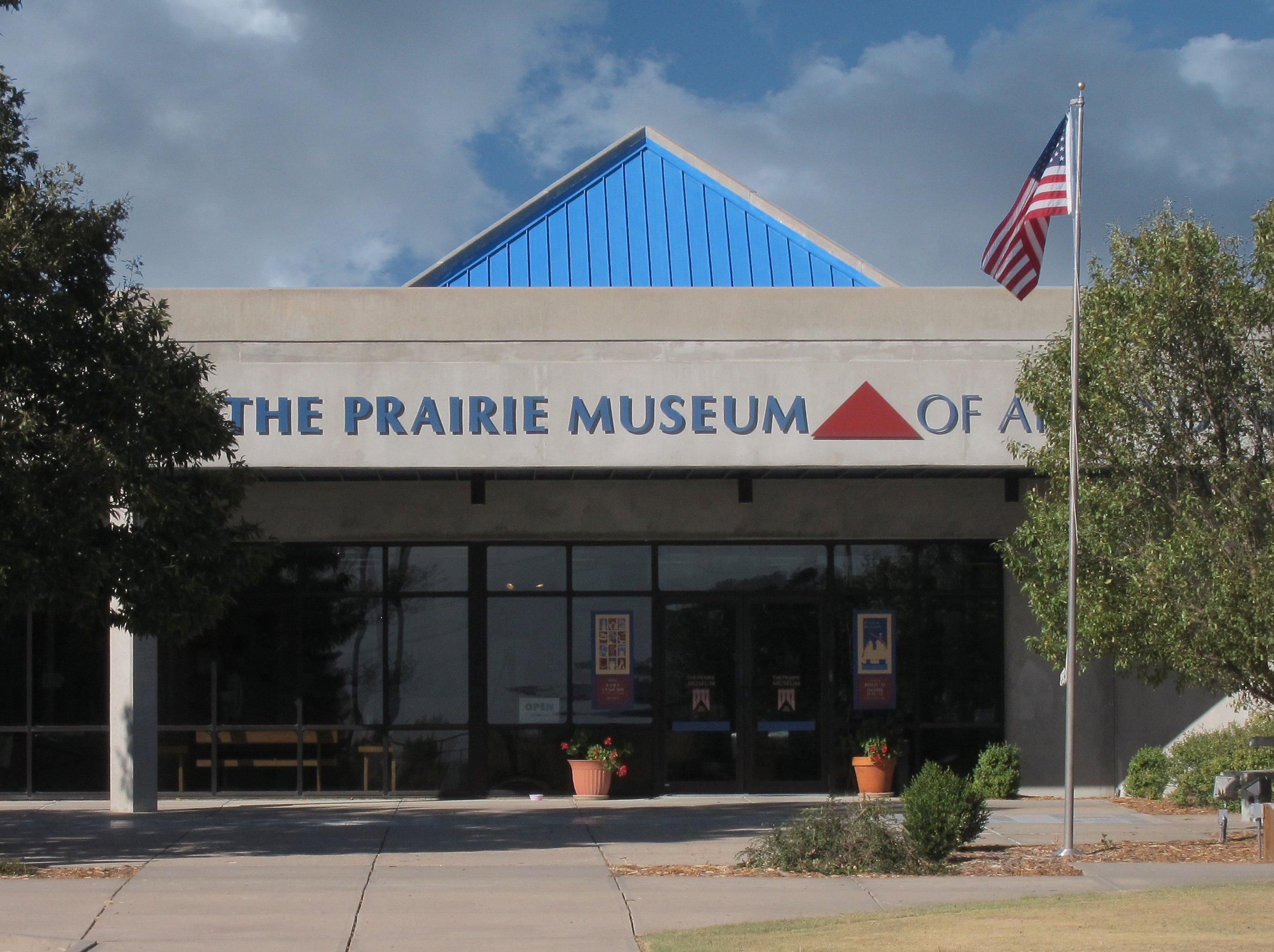Prairie Living Site
The outdoor exhibits reflect the lives of the pioneers who settled in Western Kansas.
The 24-acre site was purchased in 1978.
(Select titles for more information)
Eller House | 1930s Farmstead
The Eller House, displaying typical furniture, clothing, and objects, tells of farm life during the 1930s. During the 1930s, the High Plains suffered with little rainfall, and hot, dry winds, as well as a plague of jack rabbits. In the yard is an early type of wooden blade windmill called "umbrella" or "morning glory" which was a common sight on family farms.
Vacin-tubbs barn
No farm was complete without a barn, and this red barn is typical of early barns with its loft and corral. The Vacin-Tubbs barn was built in 1916 in Levant, Kansas by George and Pearl Tubbs to serve as a temporary home until their house could be built. Historically, barns served as a stable for livestock, a workshop, and a shed for machinery or fodder.
Nicol School
The one-room Nicol School building symbolizes the cultural and social importance of education to the pioneers. The District #15 building represents the 94 one-room rural schools that once dotted the landscape in Thomas County. The one-room school provided education to the many children living on the prairie. School consolidation in the 1930`s closed many of the country schools in the county.
The sod house shows the ingenuity of the homesteaders in using materials at hand to construct their homes on the treeless plains. The late 19th-century dwelling exhibits furniture, clothing, and other artifacts of pioneer life on the prairie. Volunteers constructed the sod house on site in 1984.
Lone star church
The Lone Star Presbyterian Church denotes the strong religious faith of the settlers. The charming white country church was built in 1915 about 13 miles north of Gem, Kansas. Its life as a church is by no means over. Here at the museum site the little country church has hosted Easter sunrise services for the Colby Presbyterian congregation, as well as being used as the location for several weddings.
Cooper barn
The Cooper Barn is the largest barn in Kansas, measuring 66' wide, 114' long, and 48' high, and holds a wealth of Thomas County history. Over 100 years of agriculture history, artifacts, and photos are displayed within the massive barn. It was moved in one piece to the site in 1992. Each summer many weddings are hosted in this gorgeous structure. In 2008, the Cooper Barn was voted one of the Eight Wonders of Kansas Architecture. In 2015, visitors and fans voted the Prairie Museum of Art & History and the Cooper Barn as one of 70 don`t-miss Kansas Bucket List experiences.
High & Dry: Agriculture on the High Plains
Focusing on the rich agricultural history of northwest Kansas, this exhibit is available in the Cooper Barn.
Our intent with this exhibit was to provide some general information about agricultural history while at the same time honing in on the specifics of farming in this region. The title "High and Dry" is meant to reflect how altitude and scarcity of both surface water and precipitation have shaped the practice of agriculture in western Kansas. The exhibit starts with the influx of settlers in the 1880s and takes us up to the present day.
Western Prairie Educational site
The Western Prairie Education Site is currently located on ten acres just south of the museum. It is used to provide a natural habitat for wildlife and an area for schools to utilize as an educational resource. This site features native prairie grasses and wildflowers, and offers a historical view of the high plains landscape.
The museum
The Museum building is a 21,500 square foot pre-stressed concrete building. An earth berm, planted with native buffalo grass, encircles the building and blends with the surrounding prairie. Construction of the present facility commenced with a ground breaking ceremony on May 24, 1987.
Enjoy the World-Class Kuska Collection
Located inside the main building, the collection includes over 28,000 dolls, furniture, clothing, quilts, toys, glass, ceramics, silver, souvenirs, household items, musical instruments, coins, clocks, stamps, and art.

